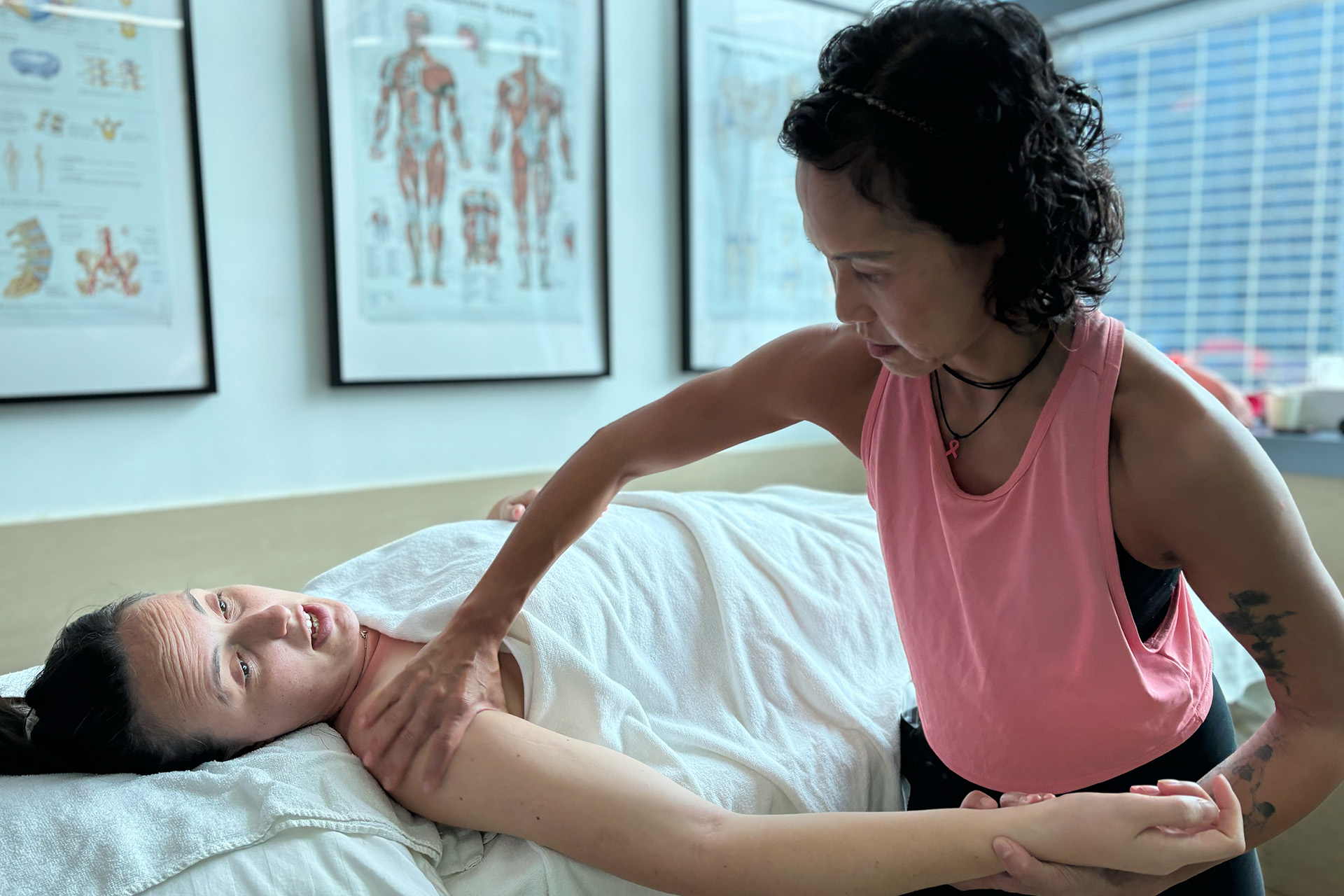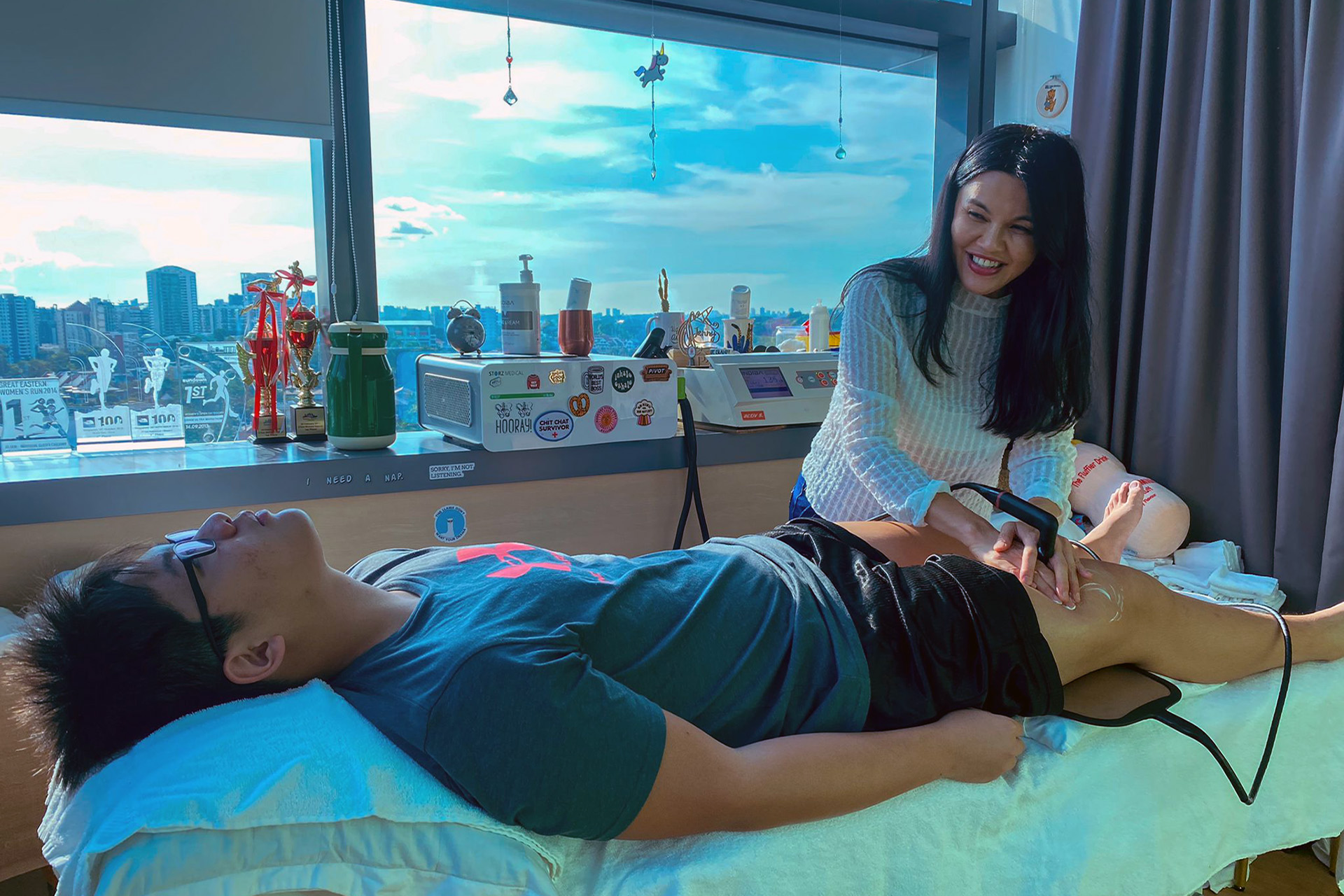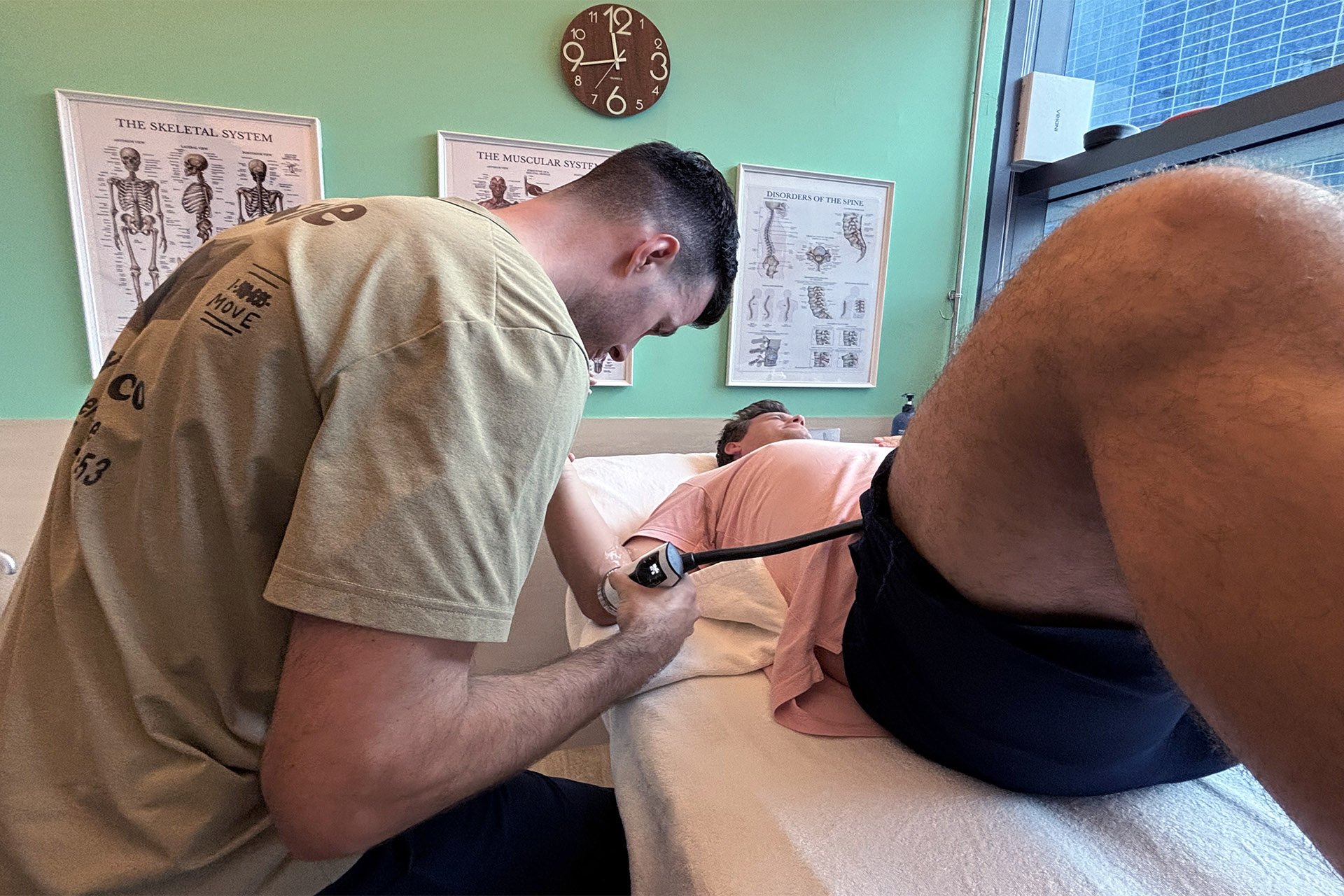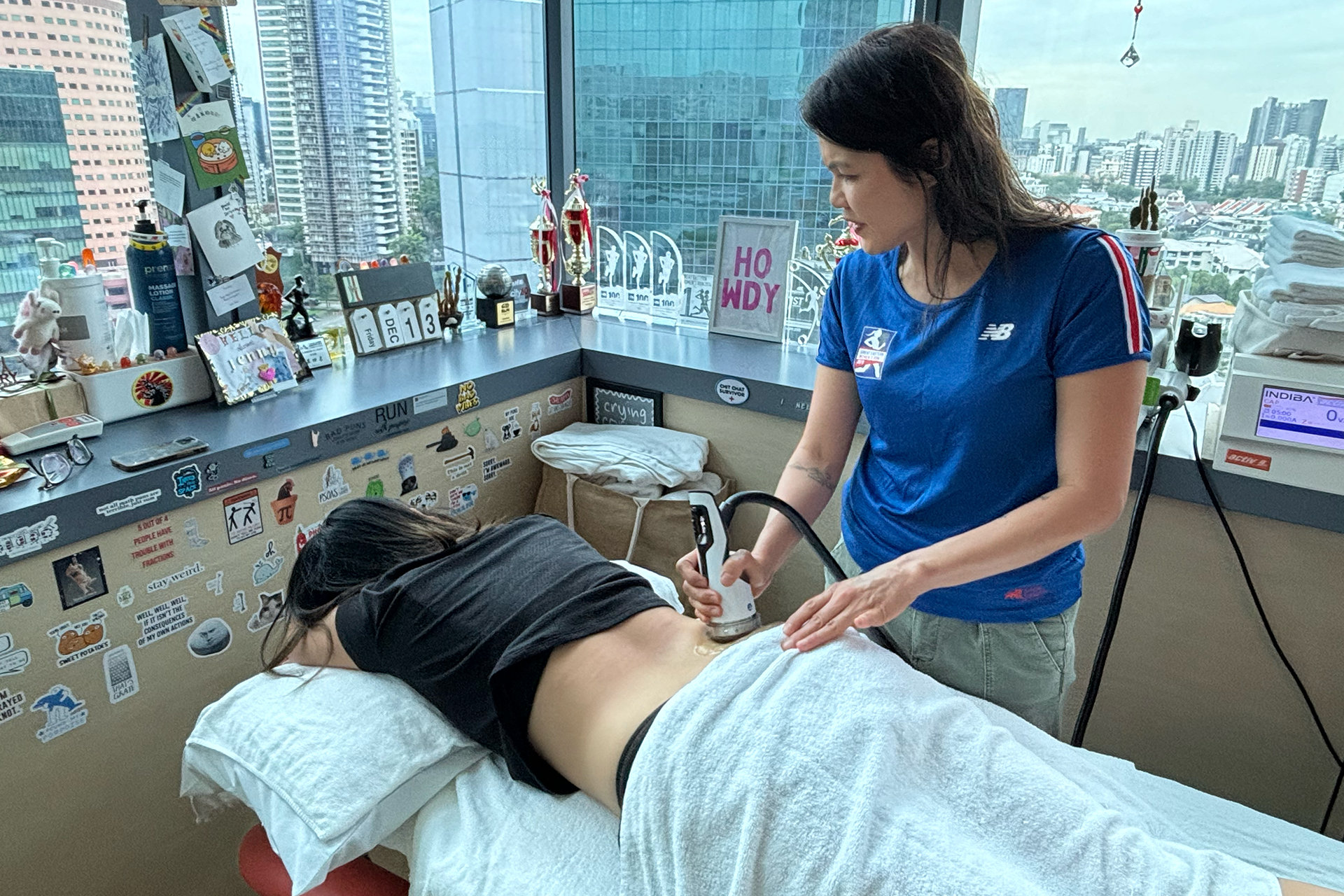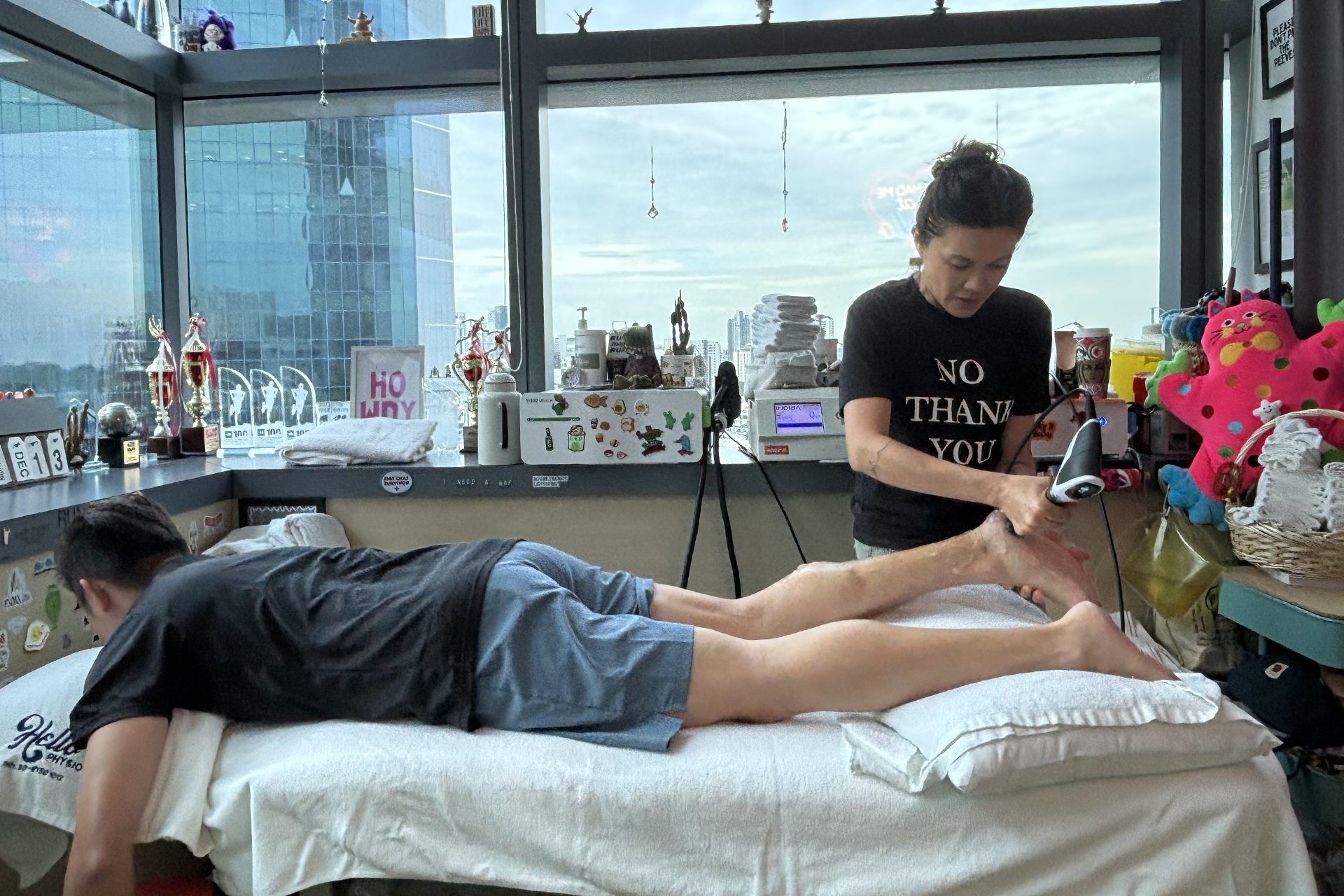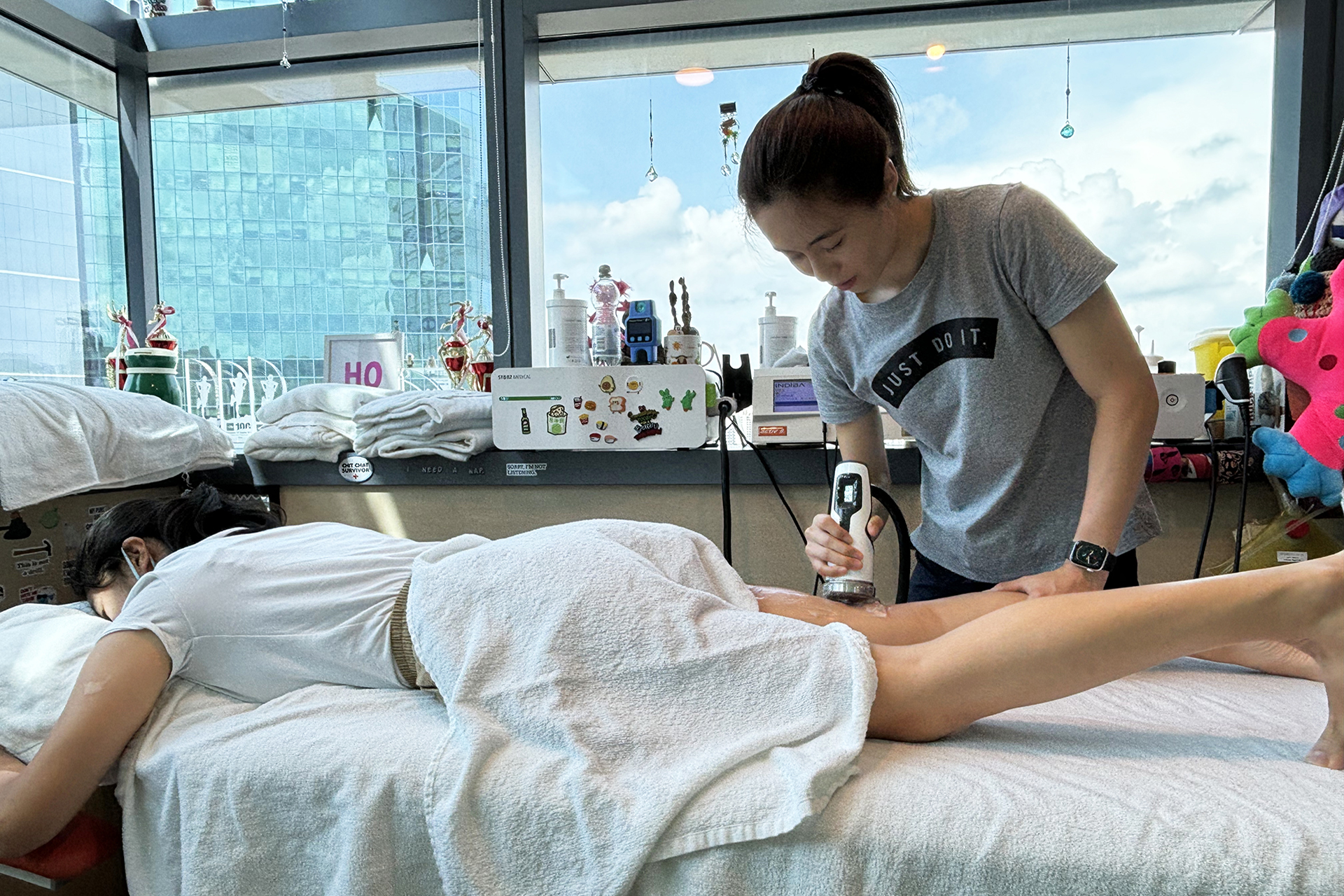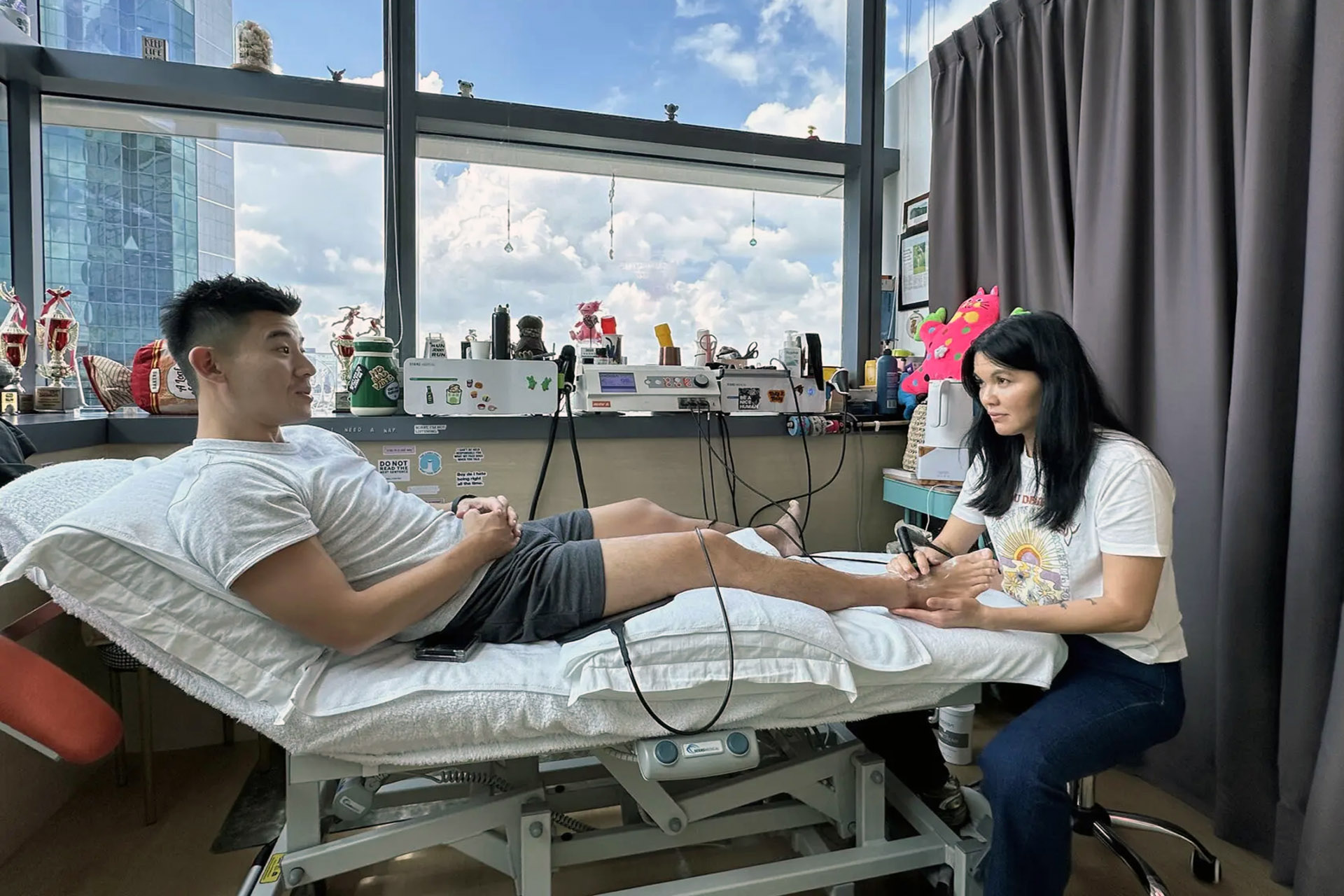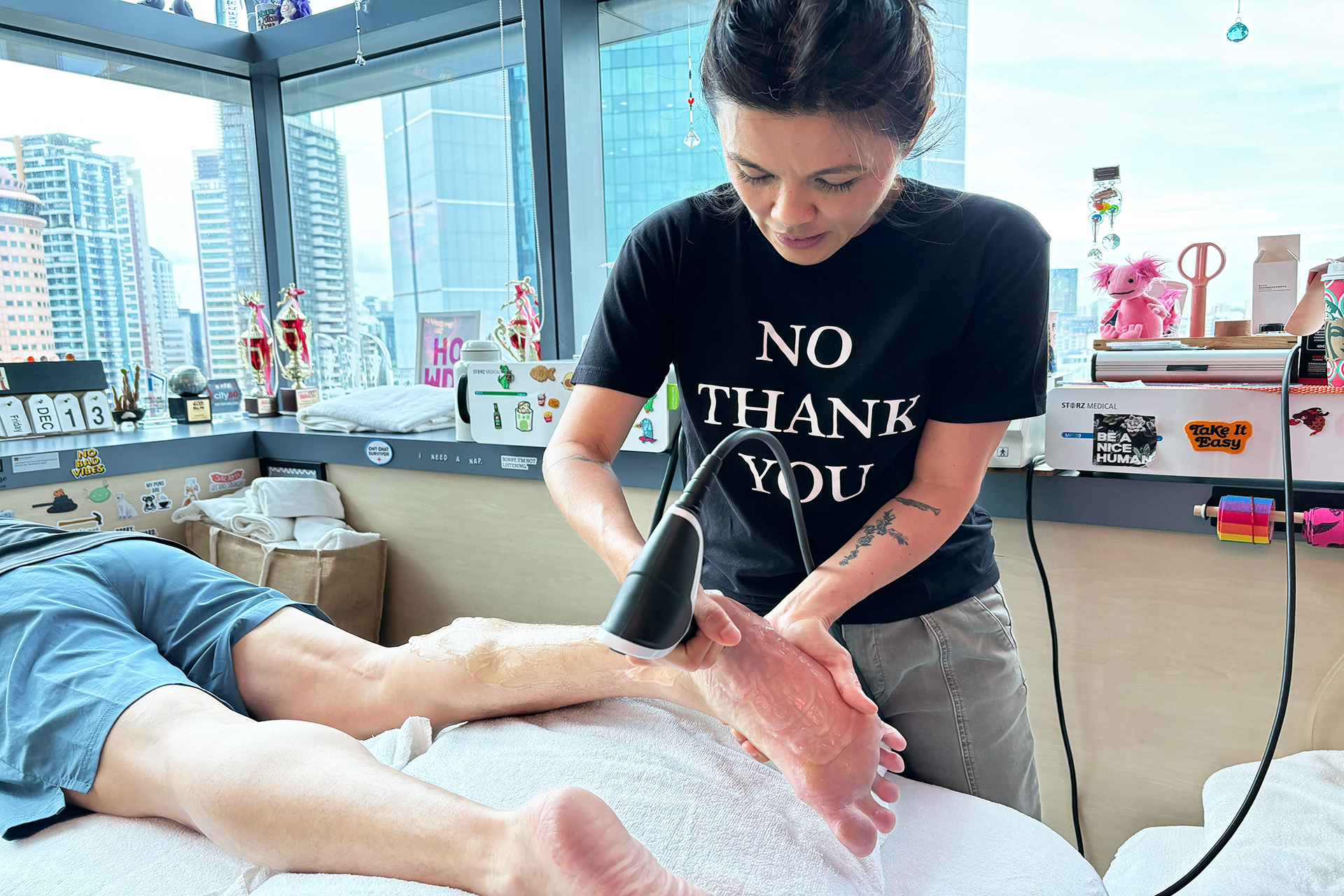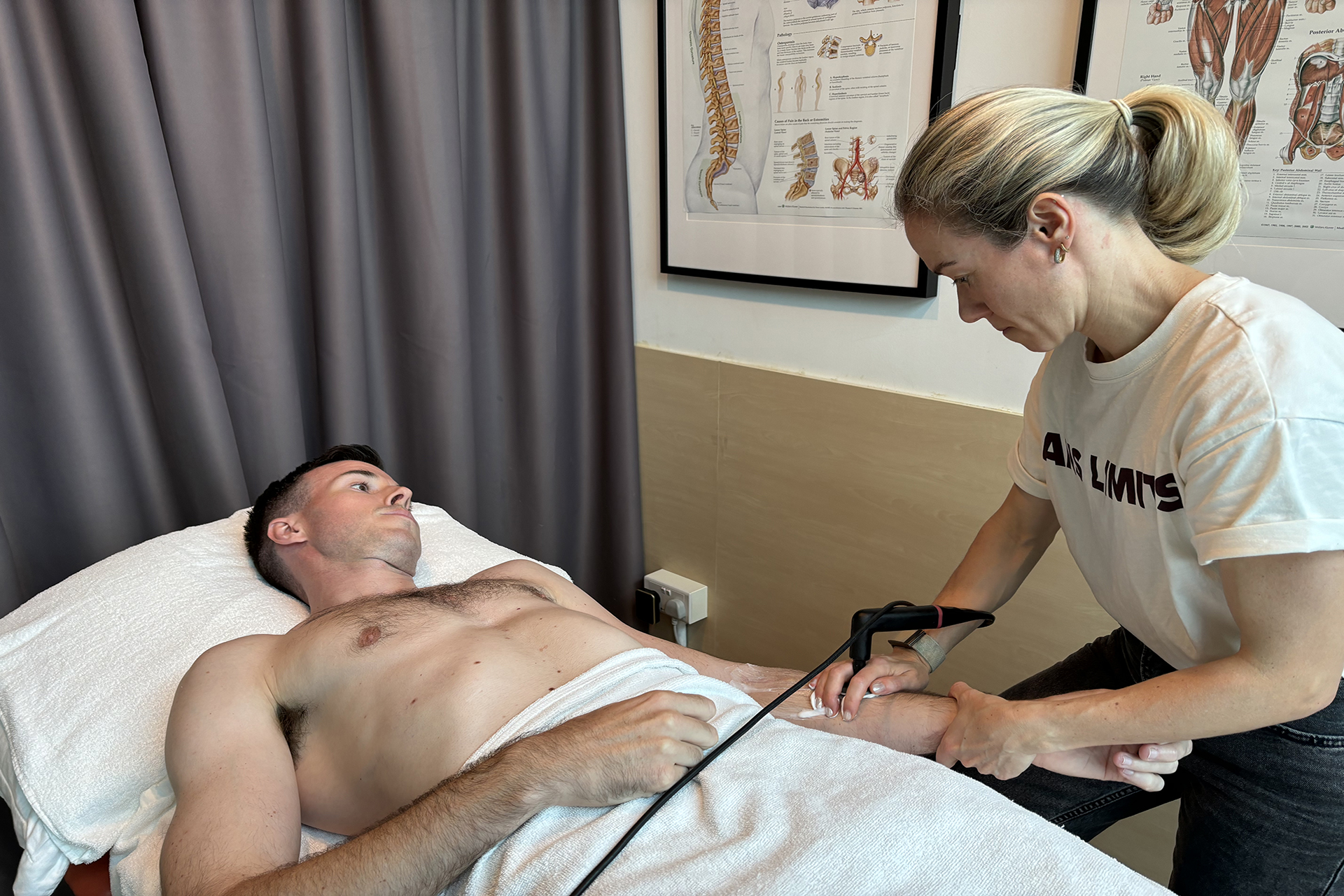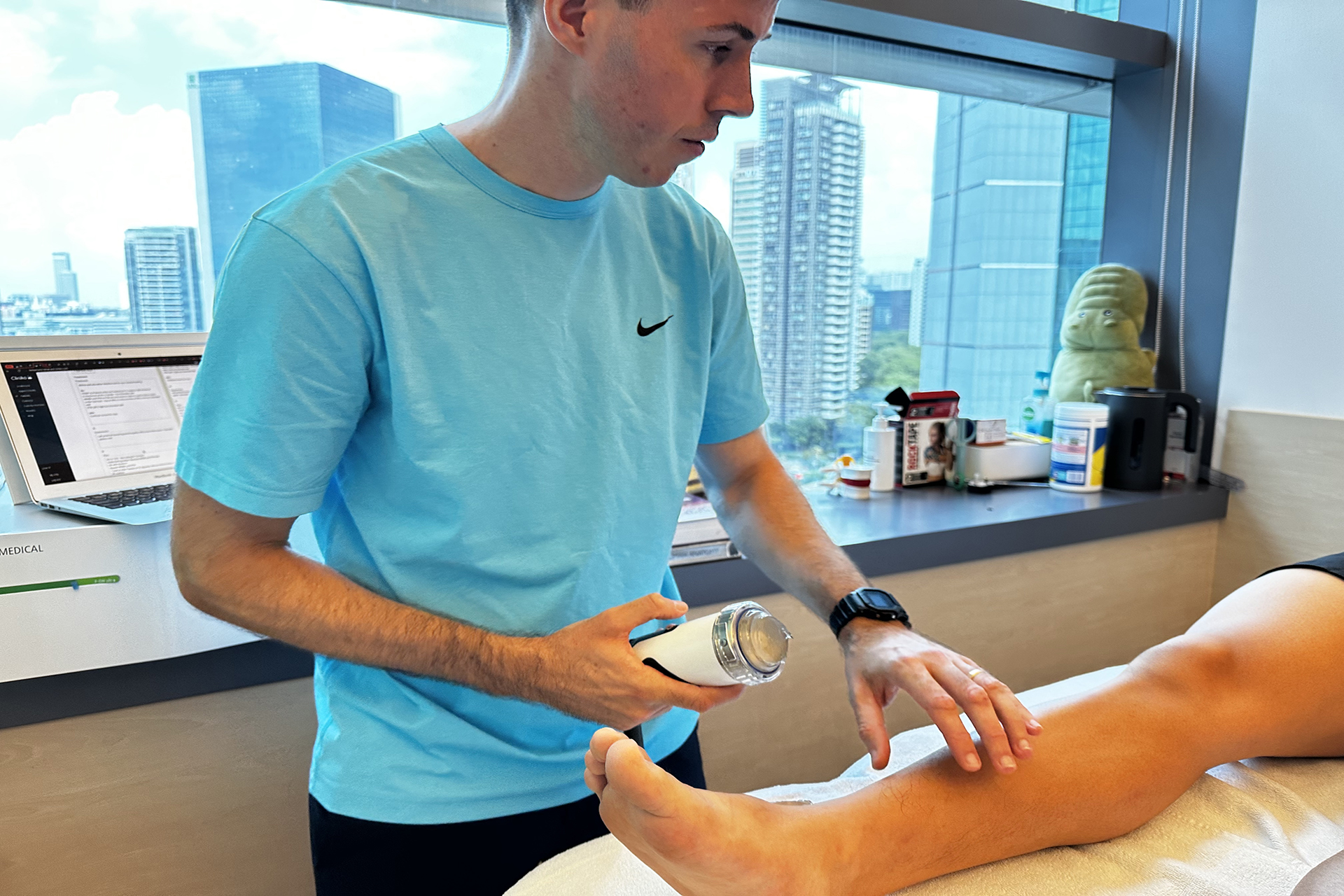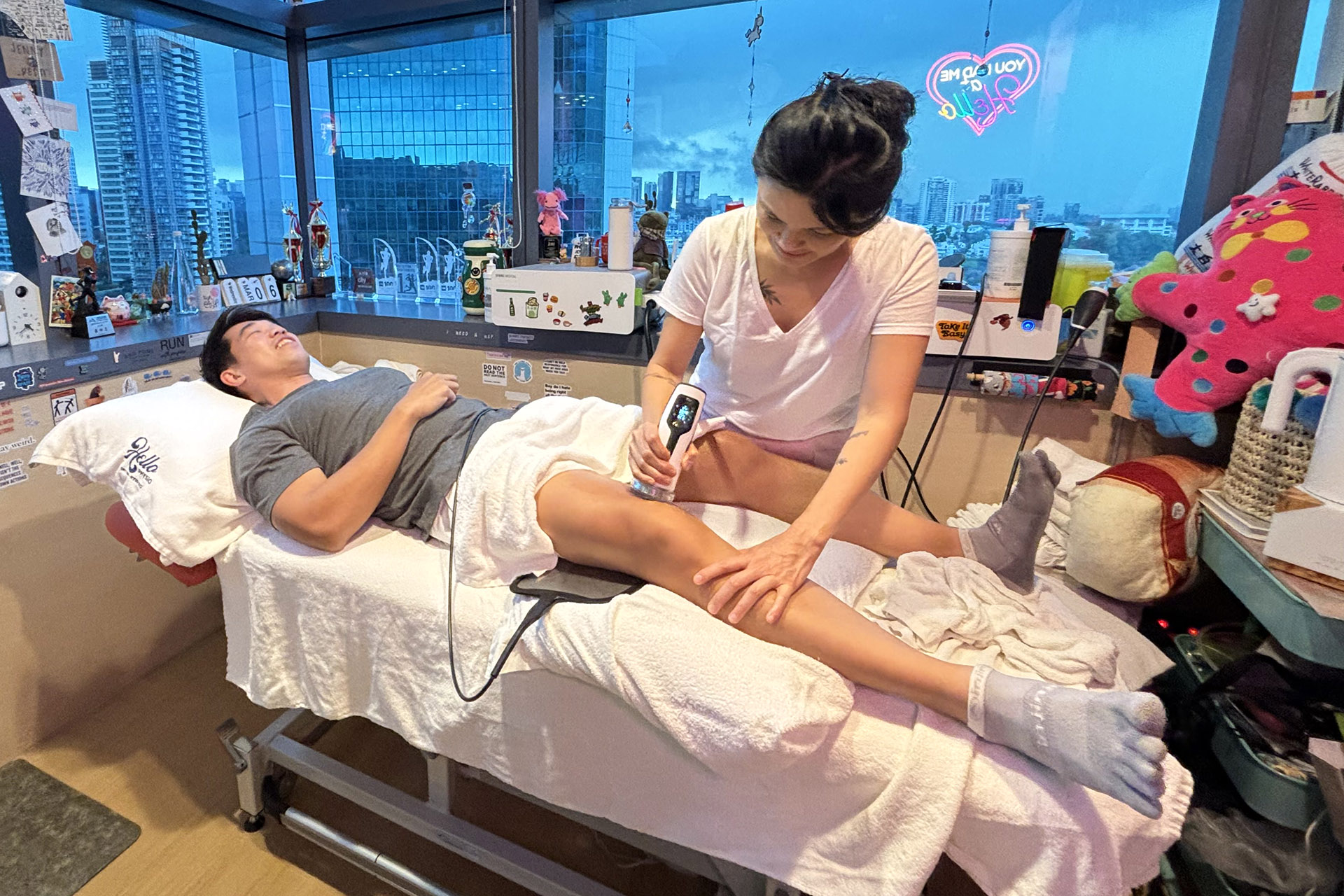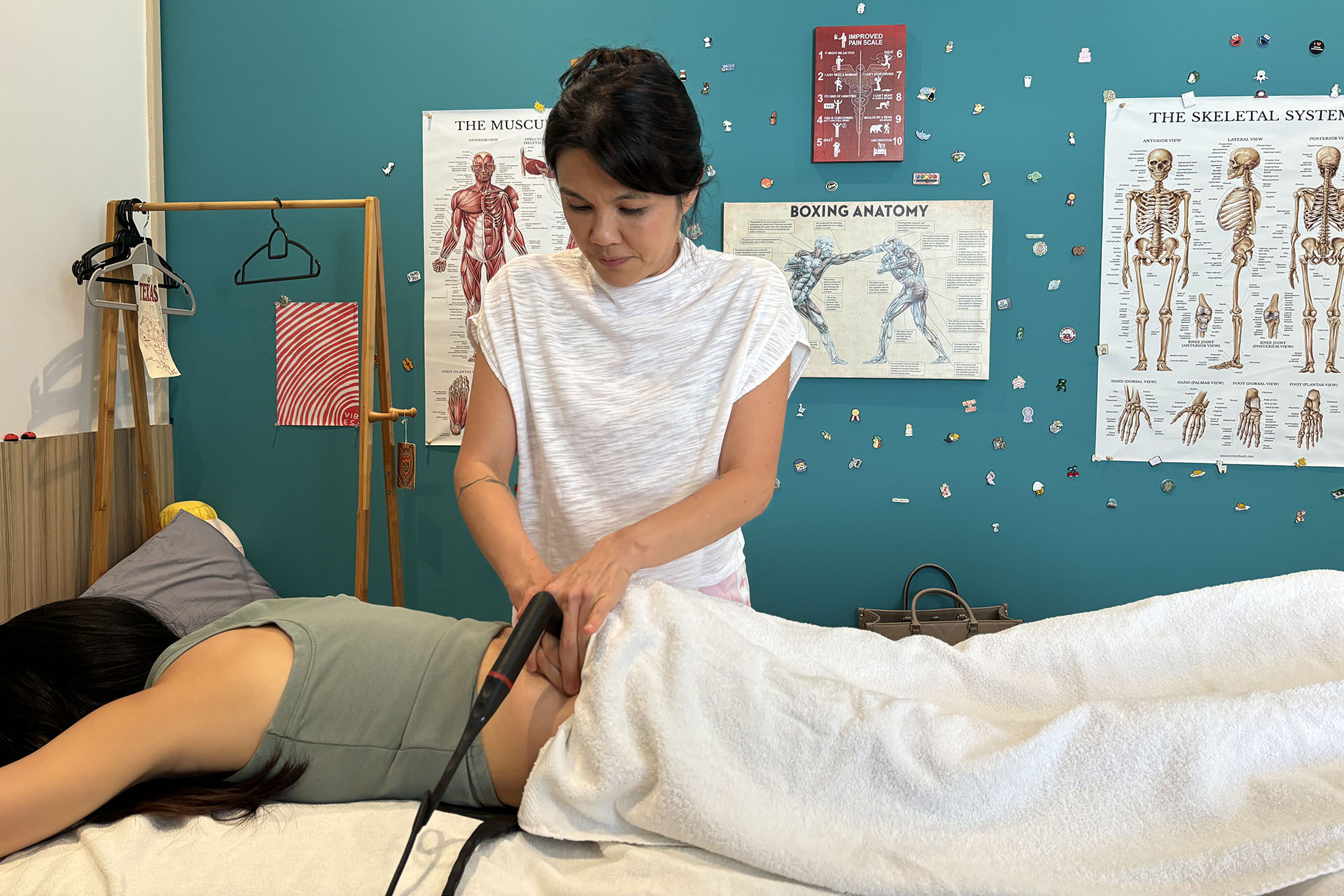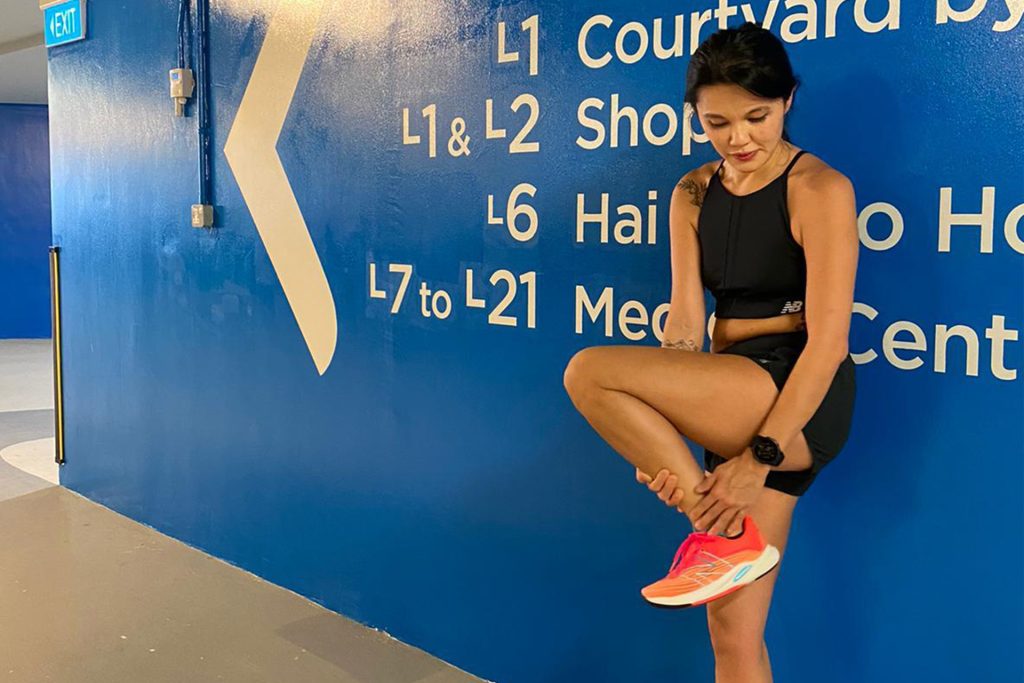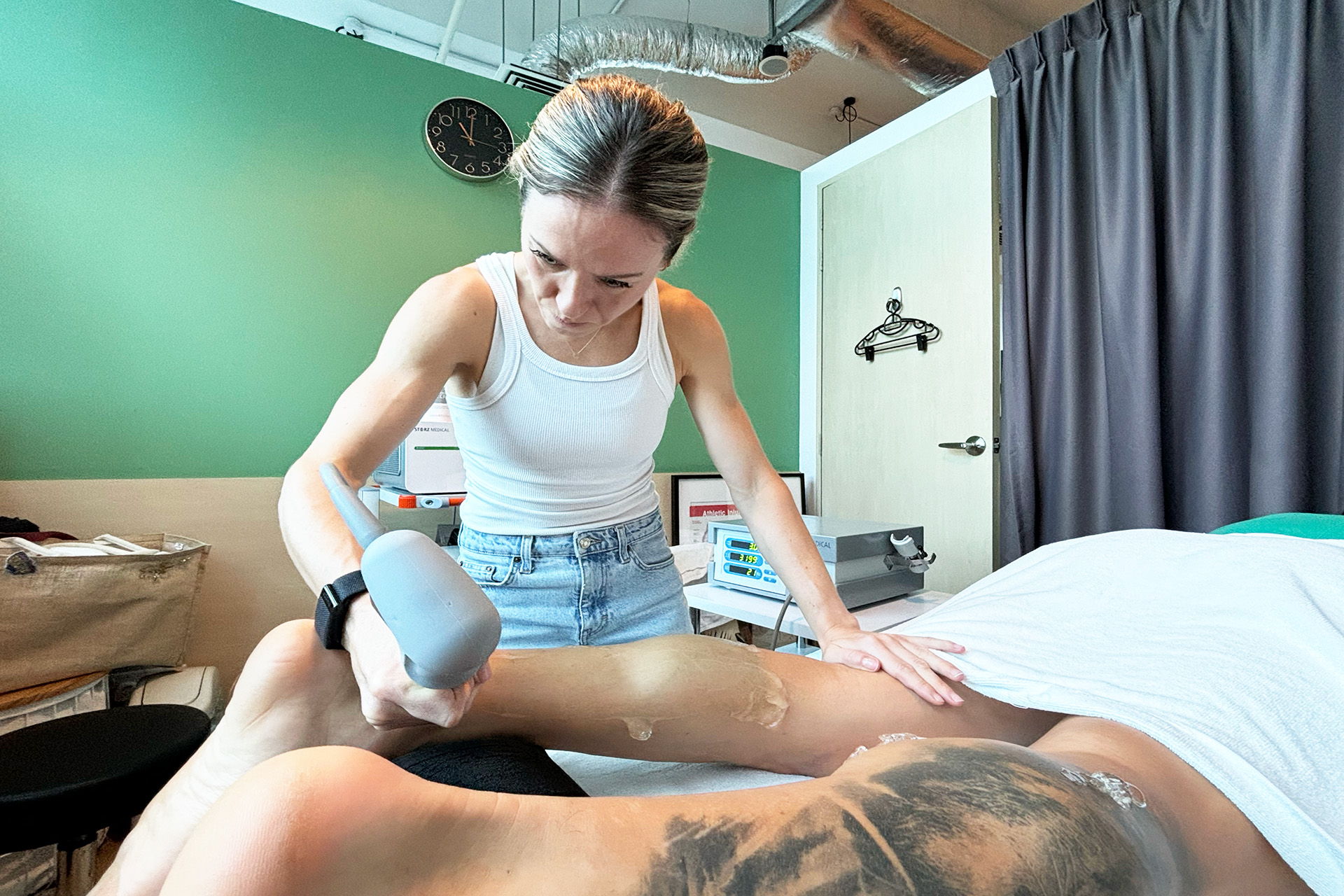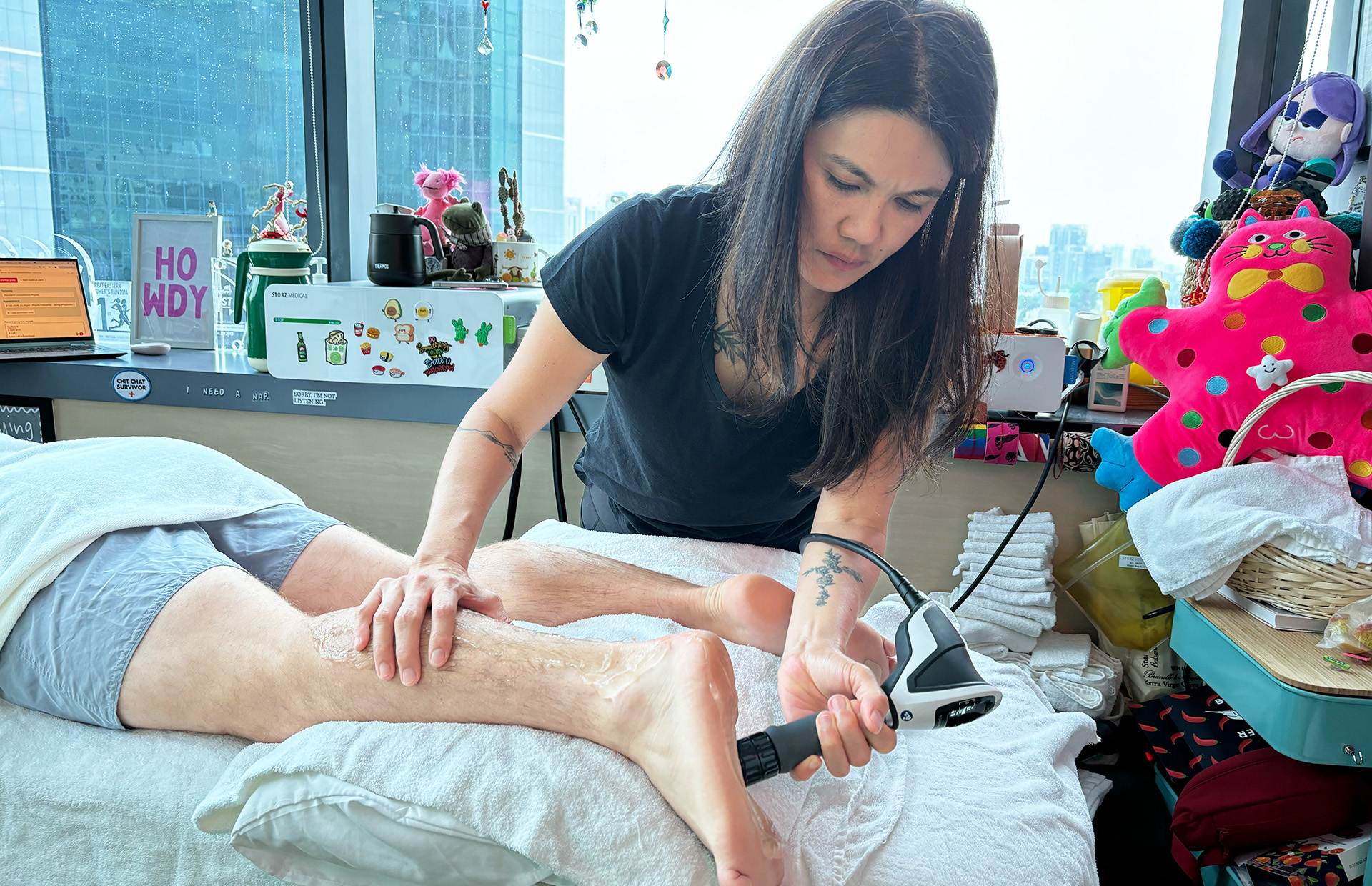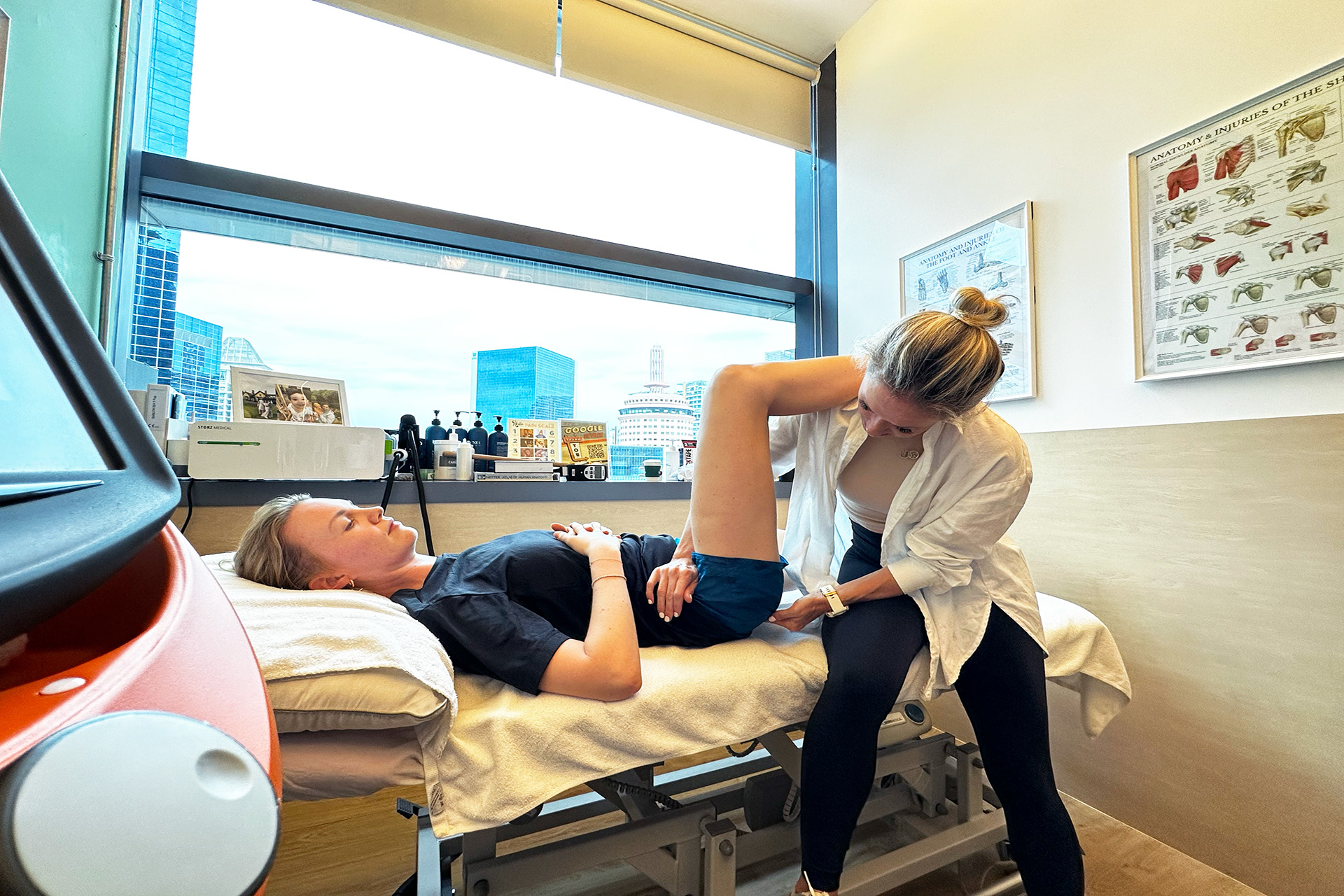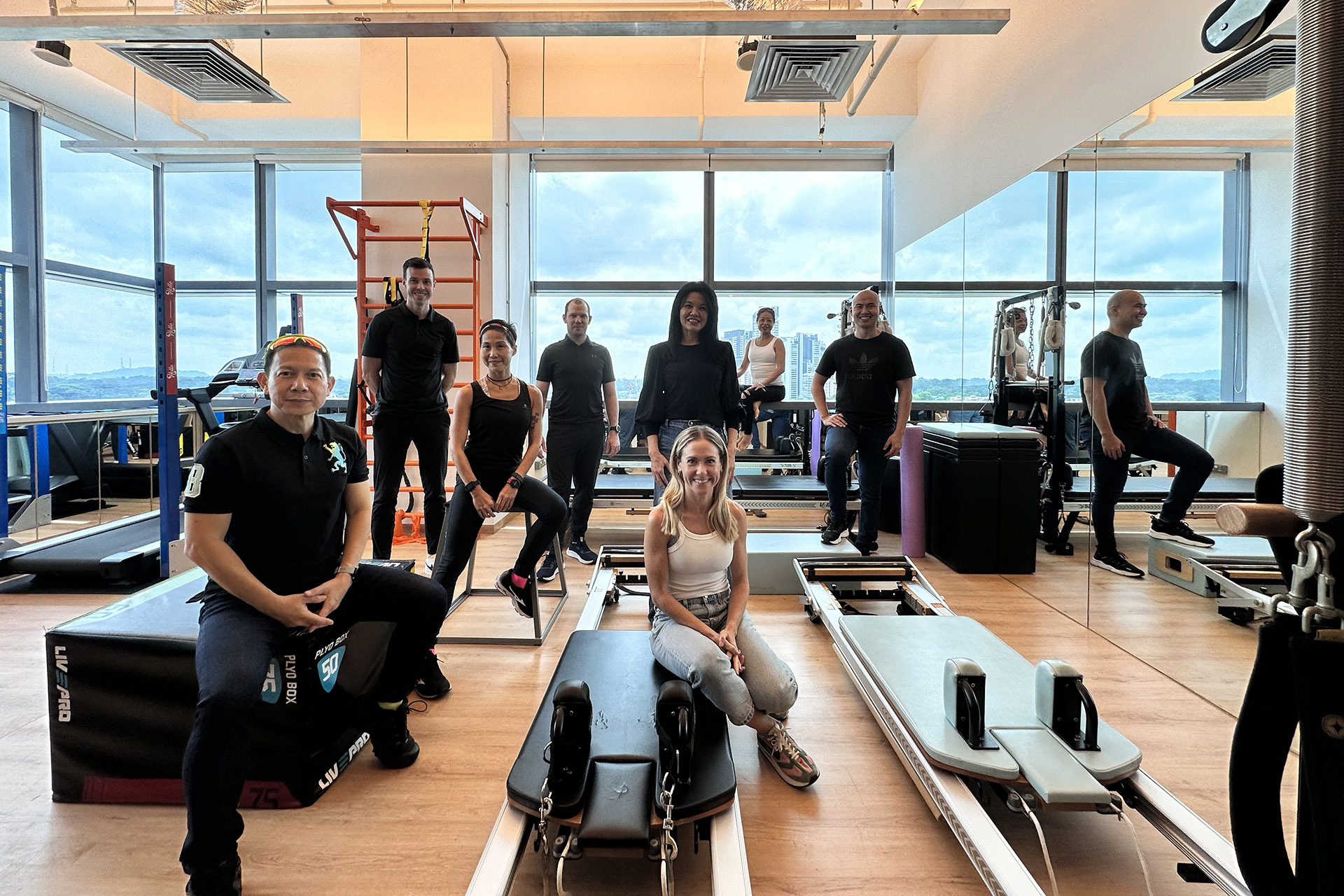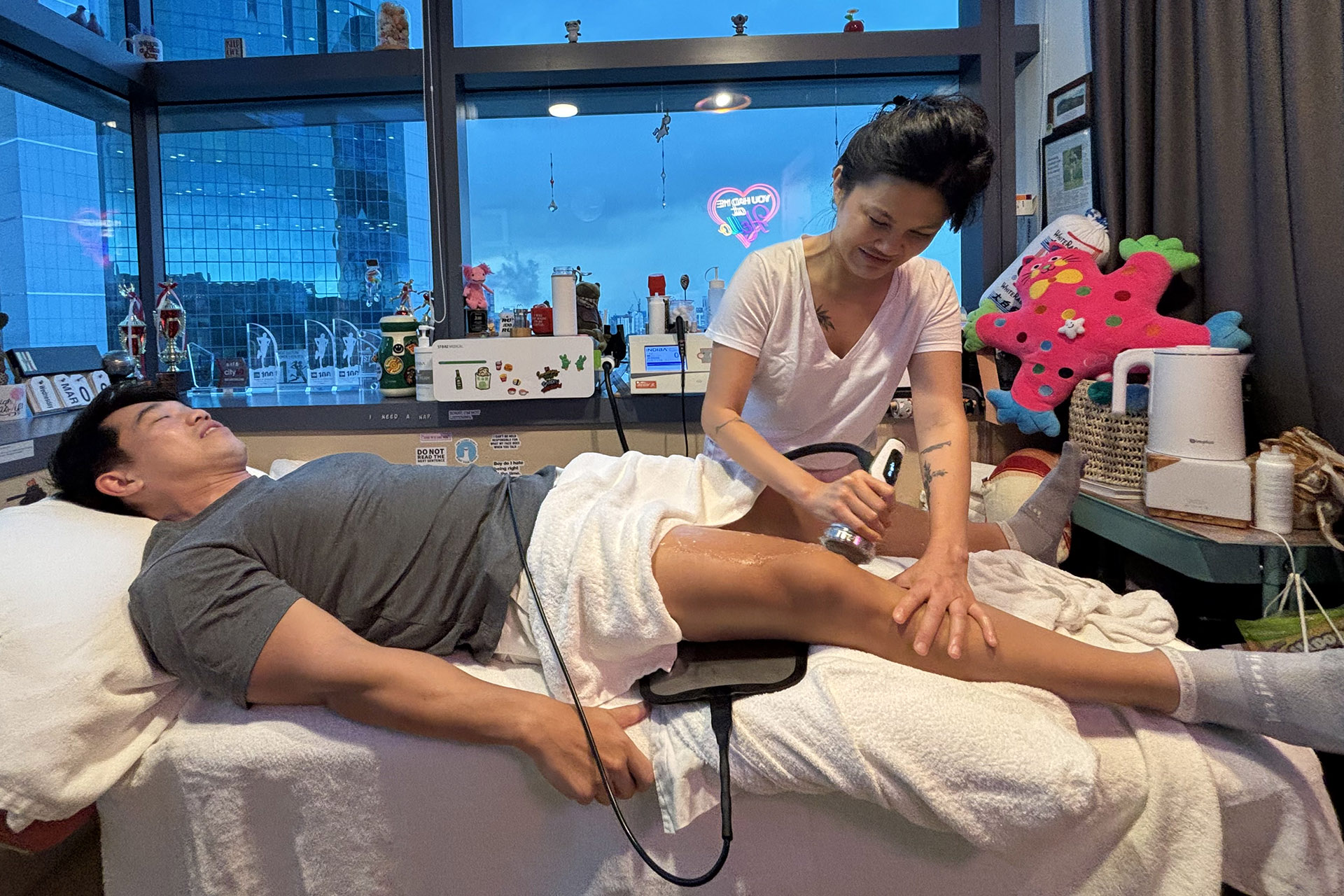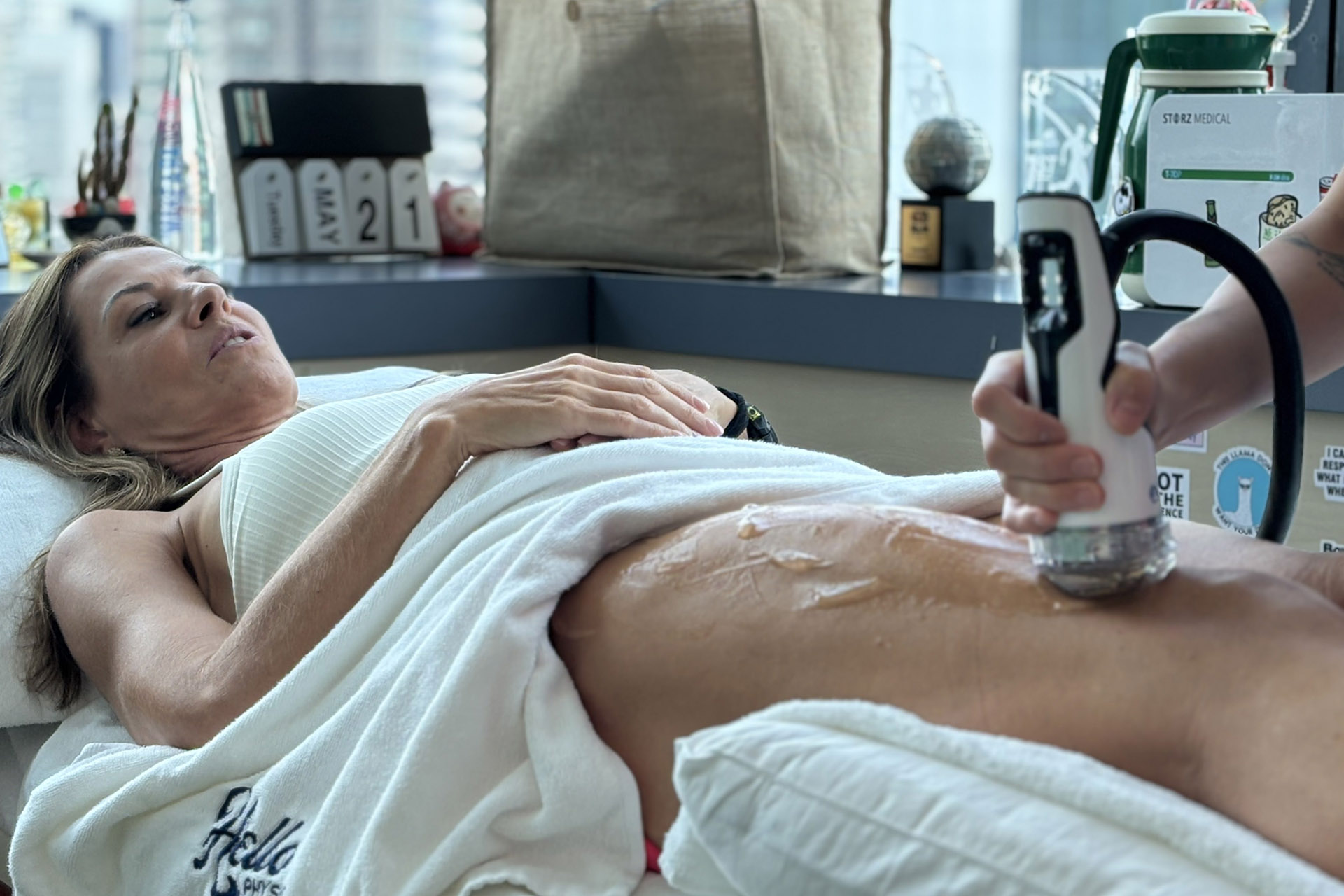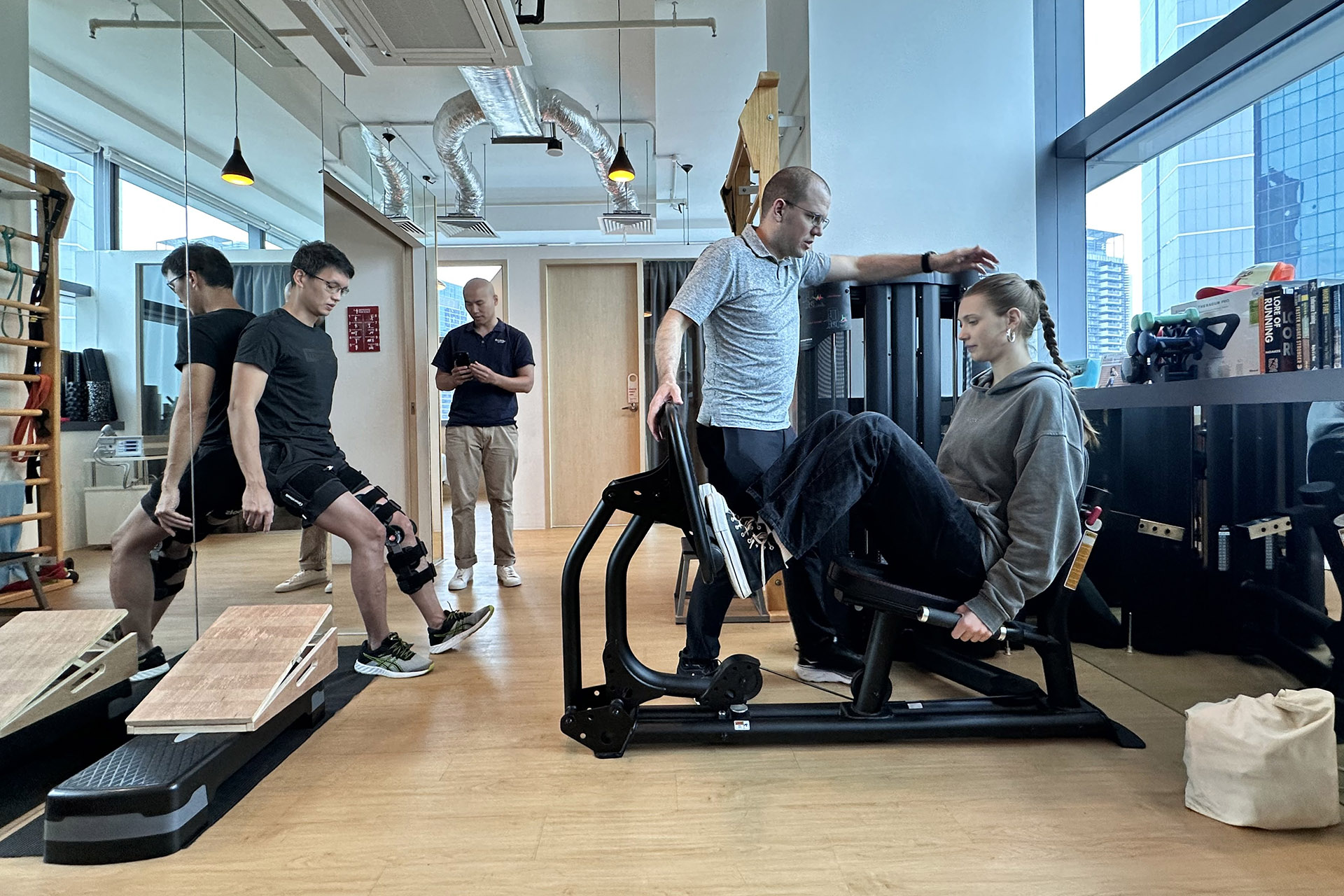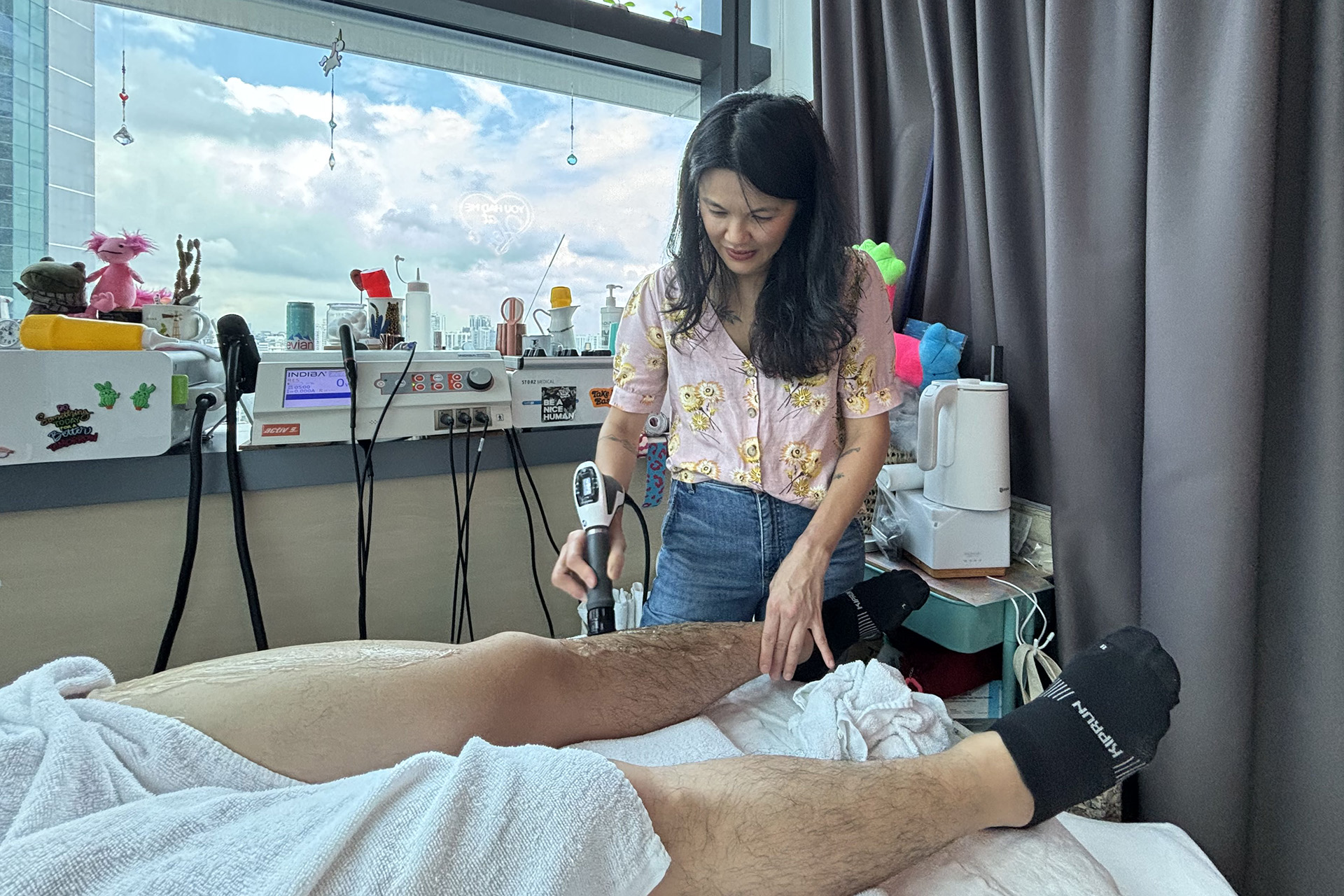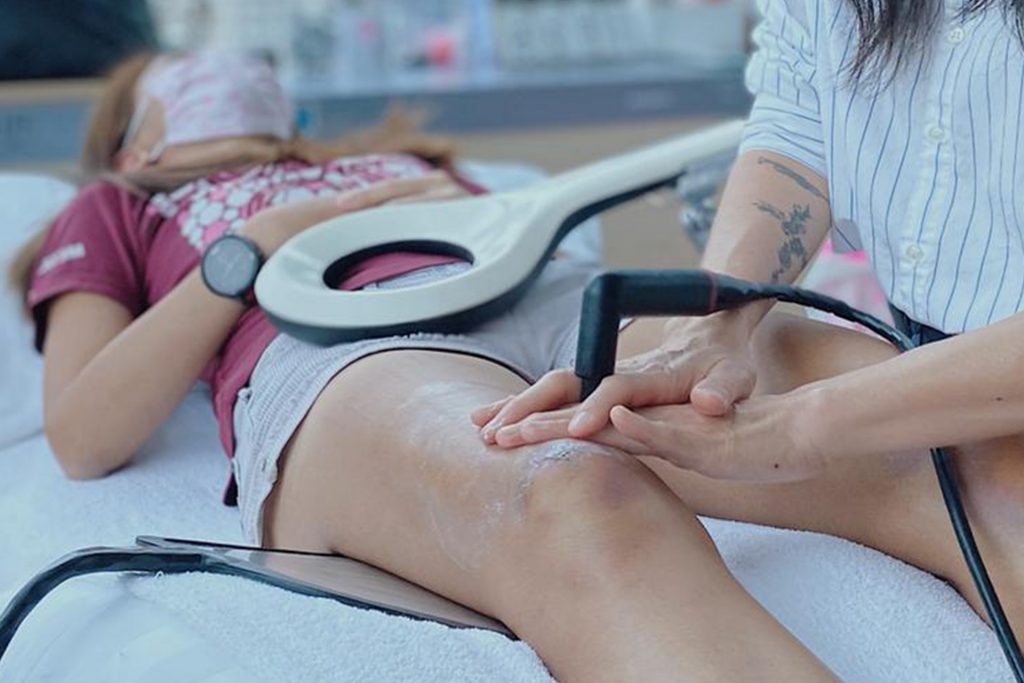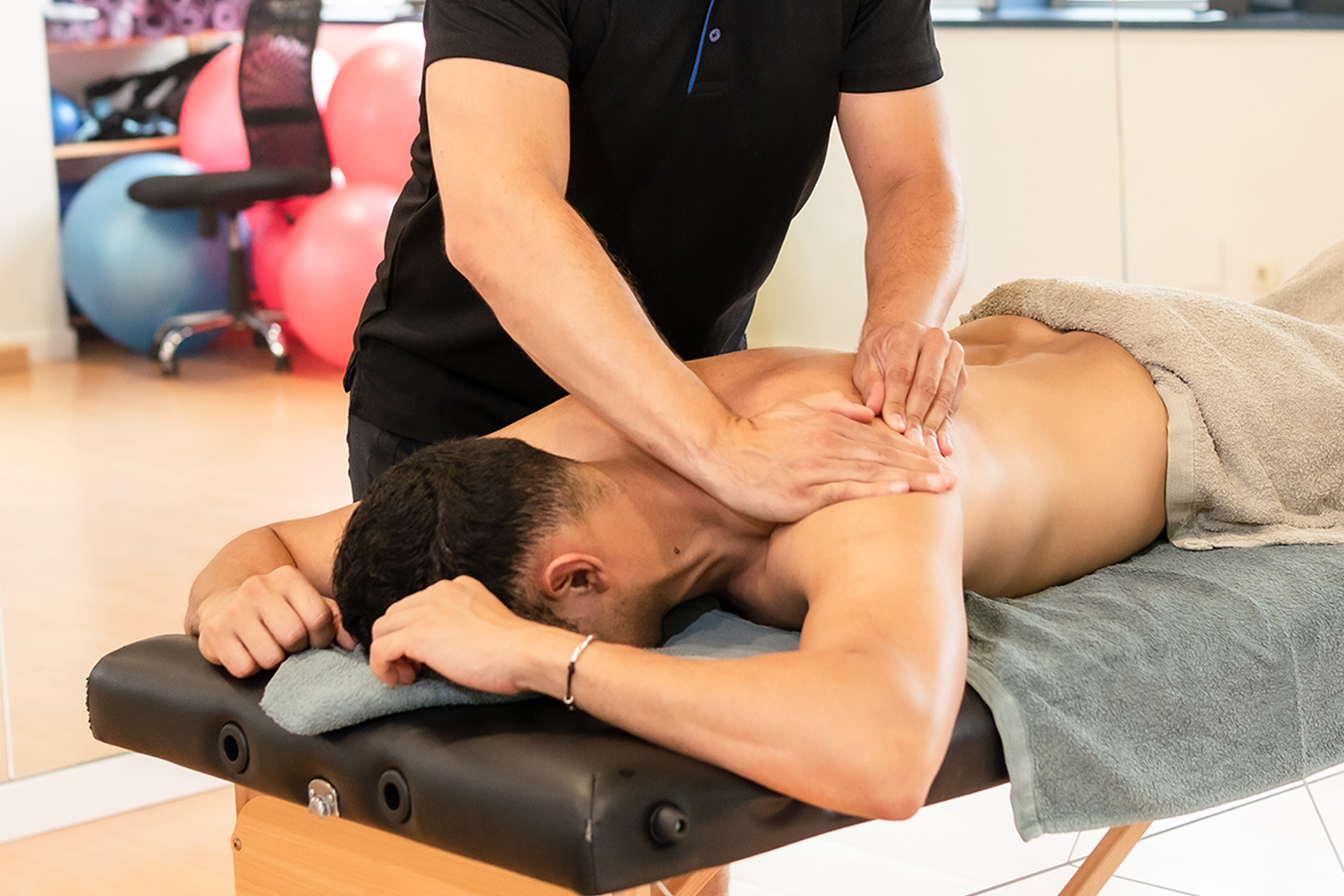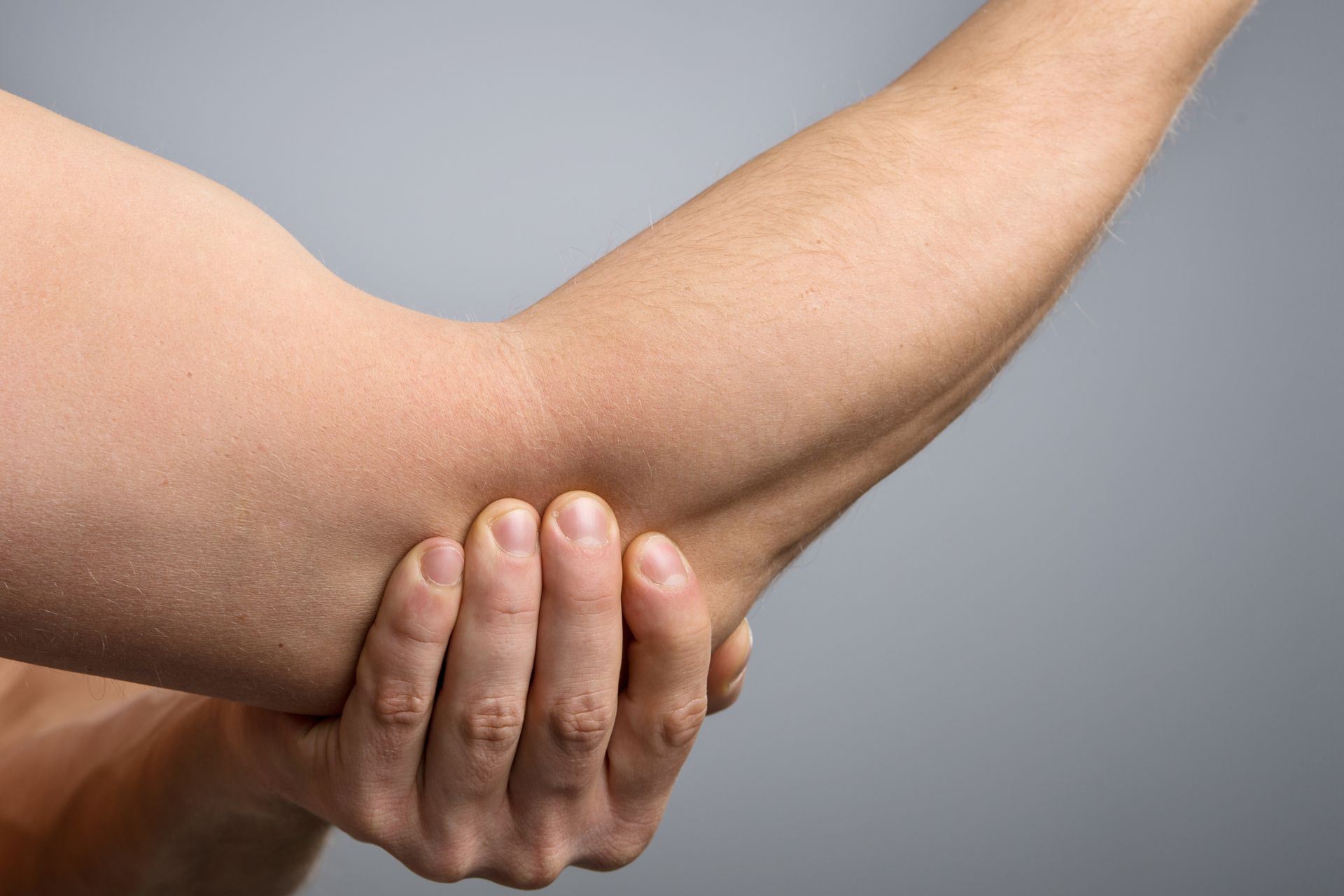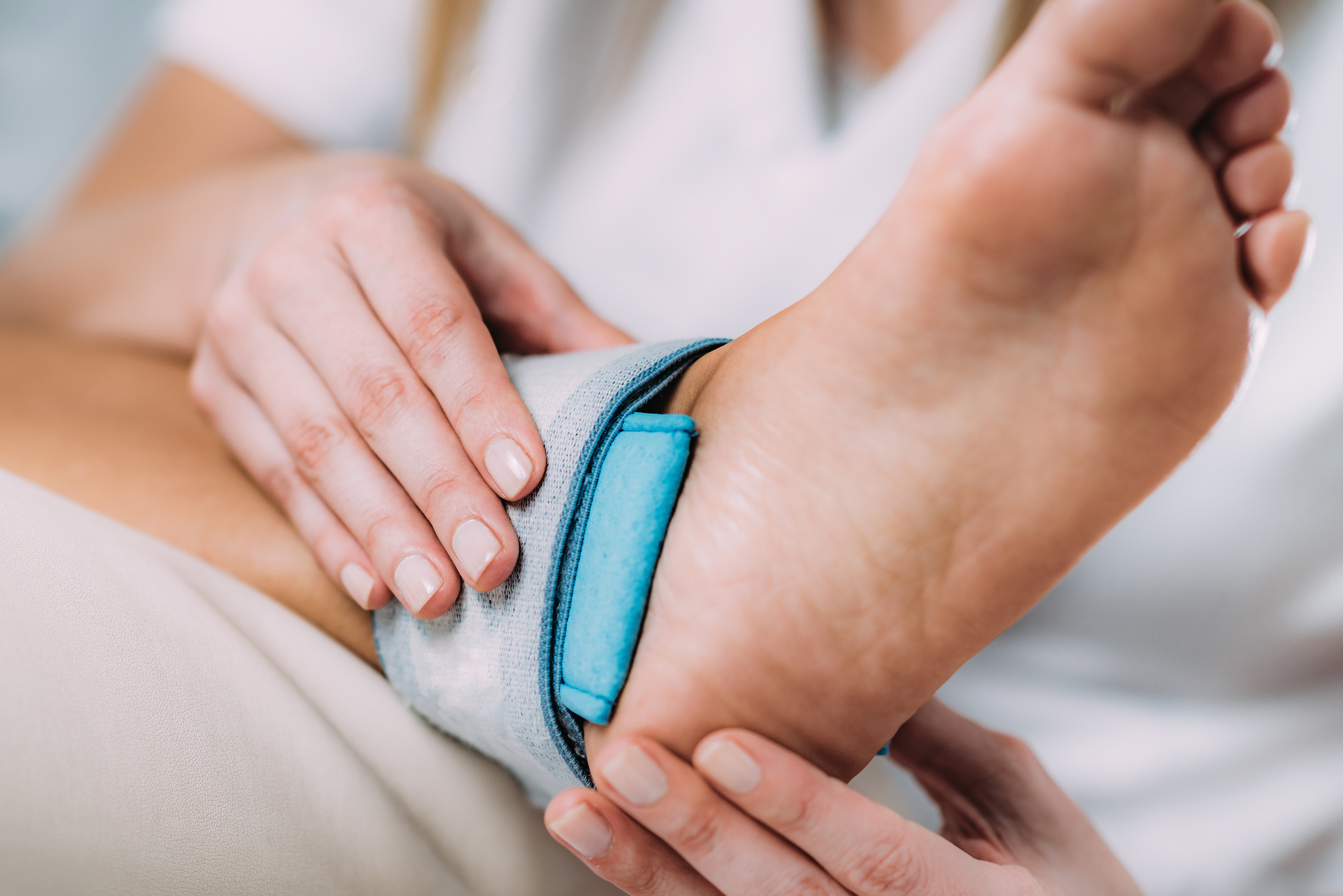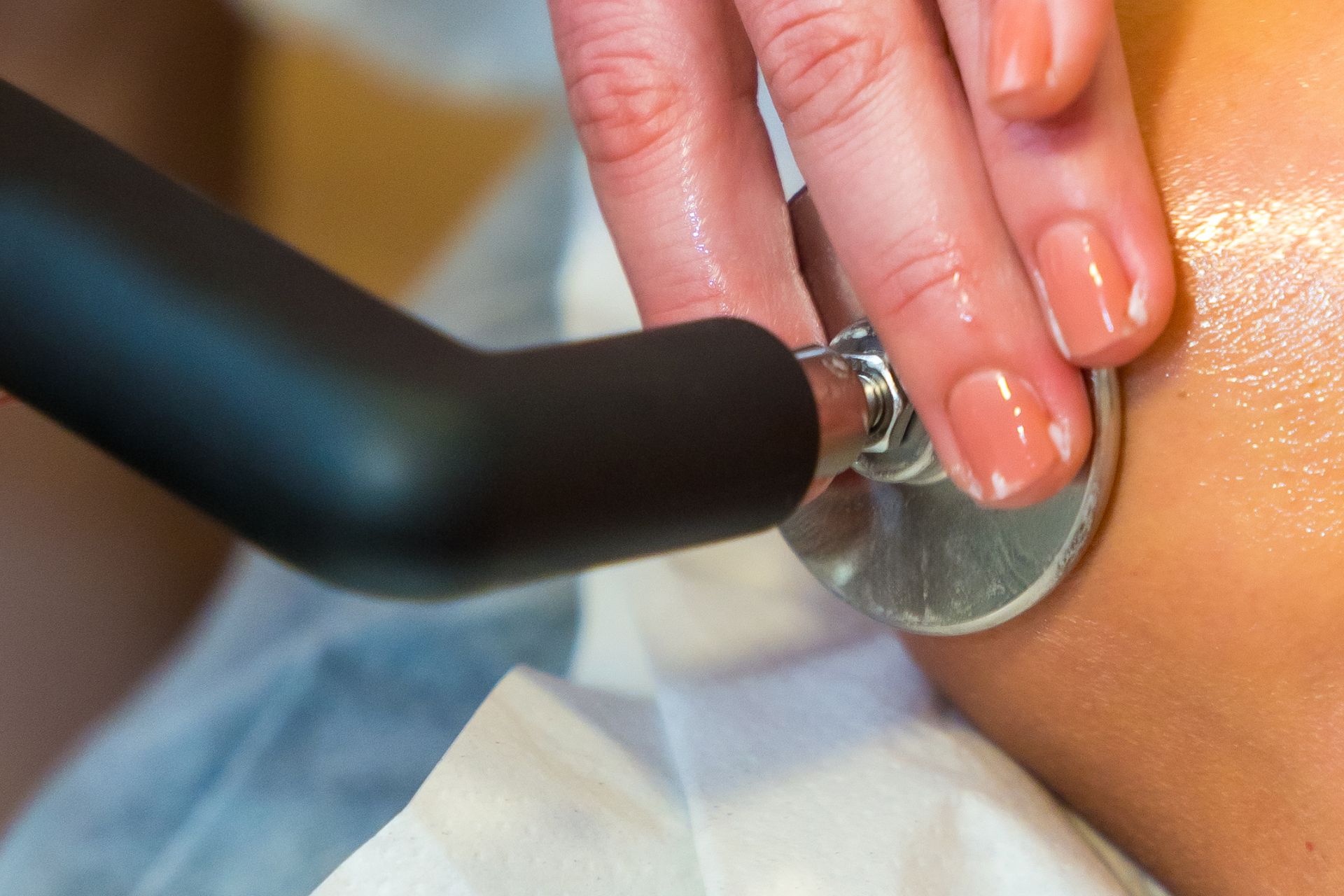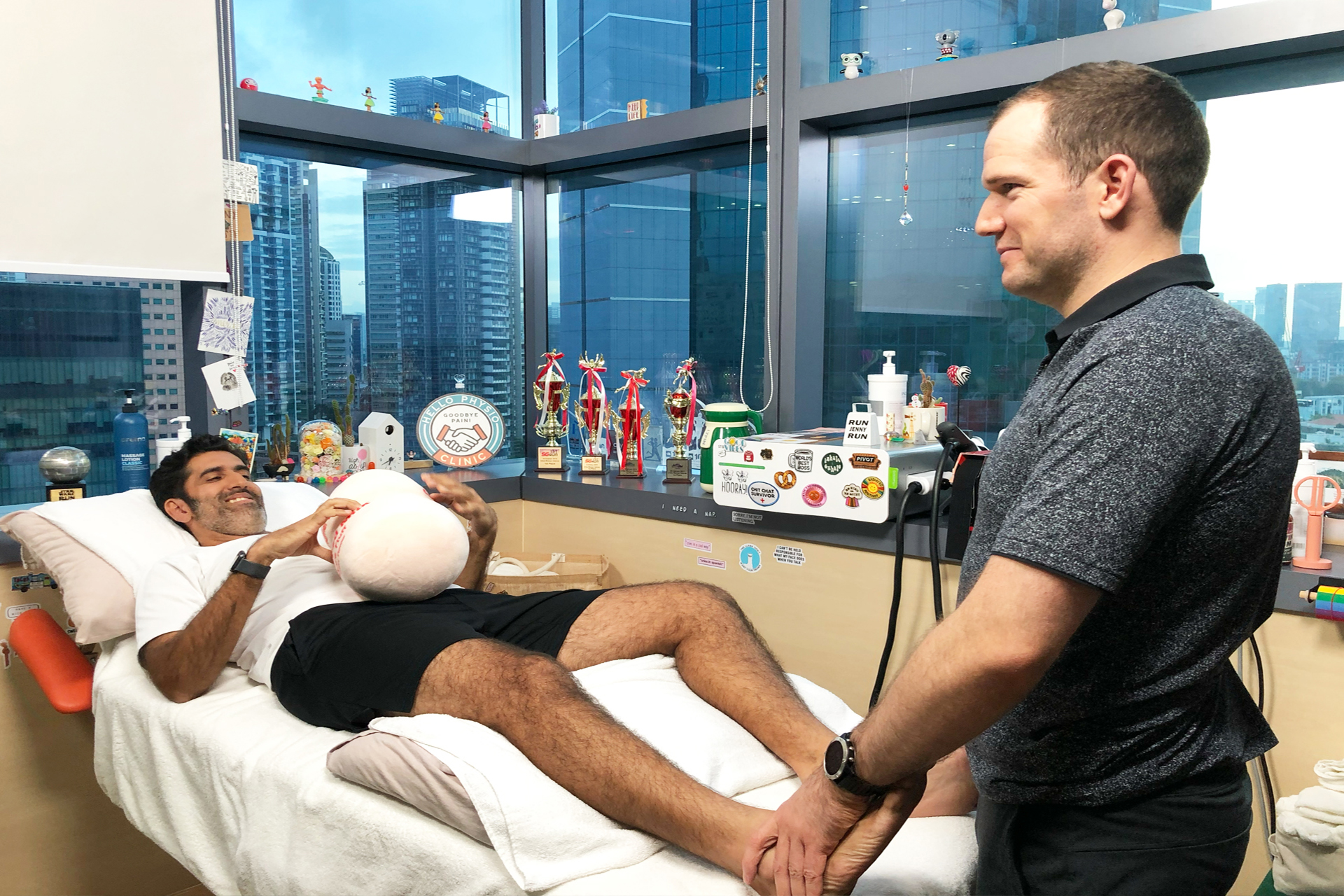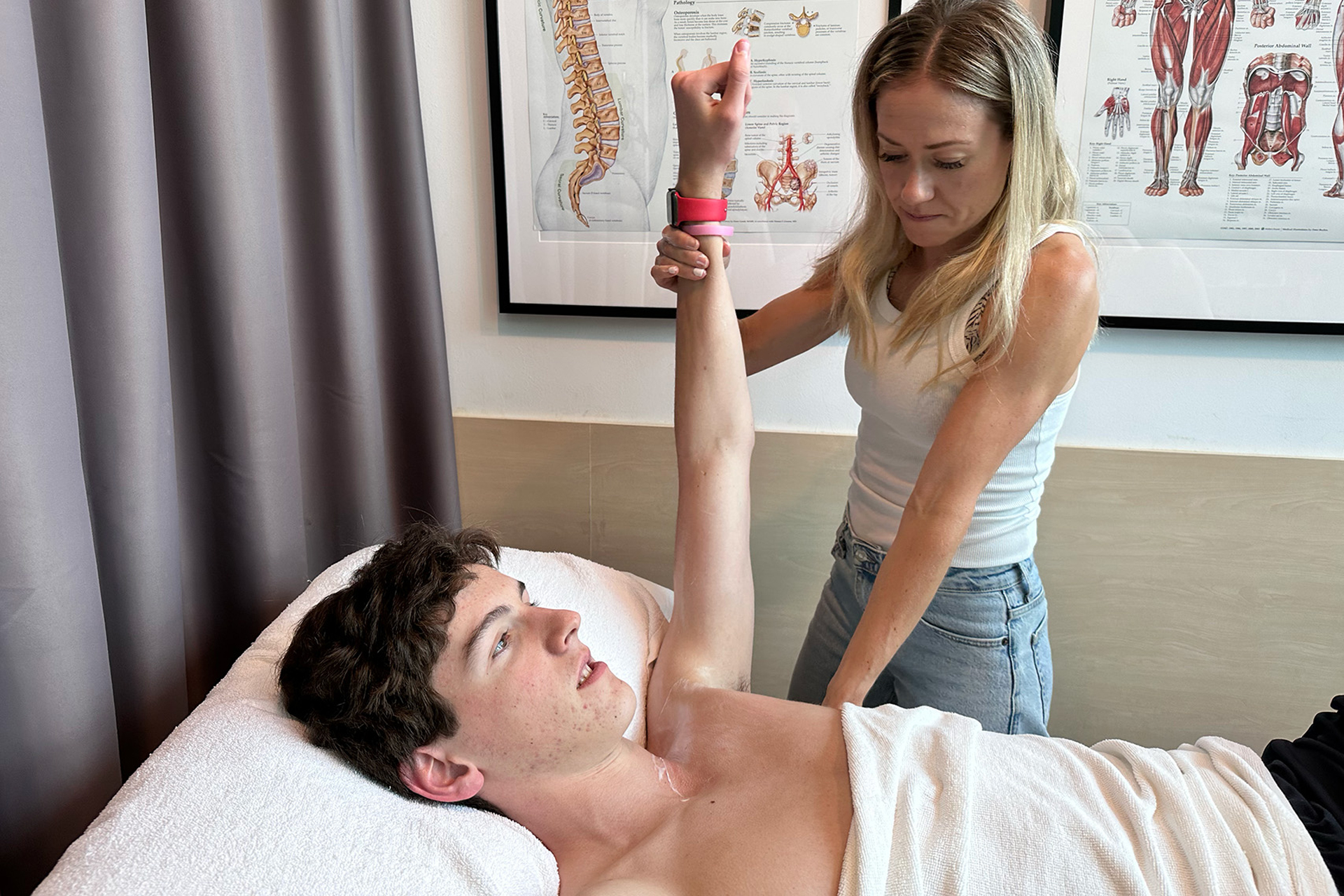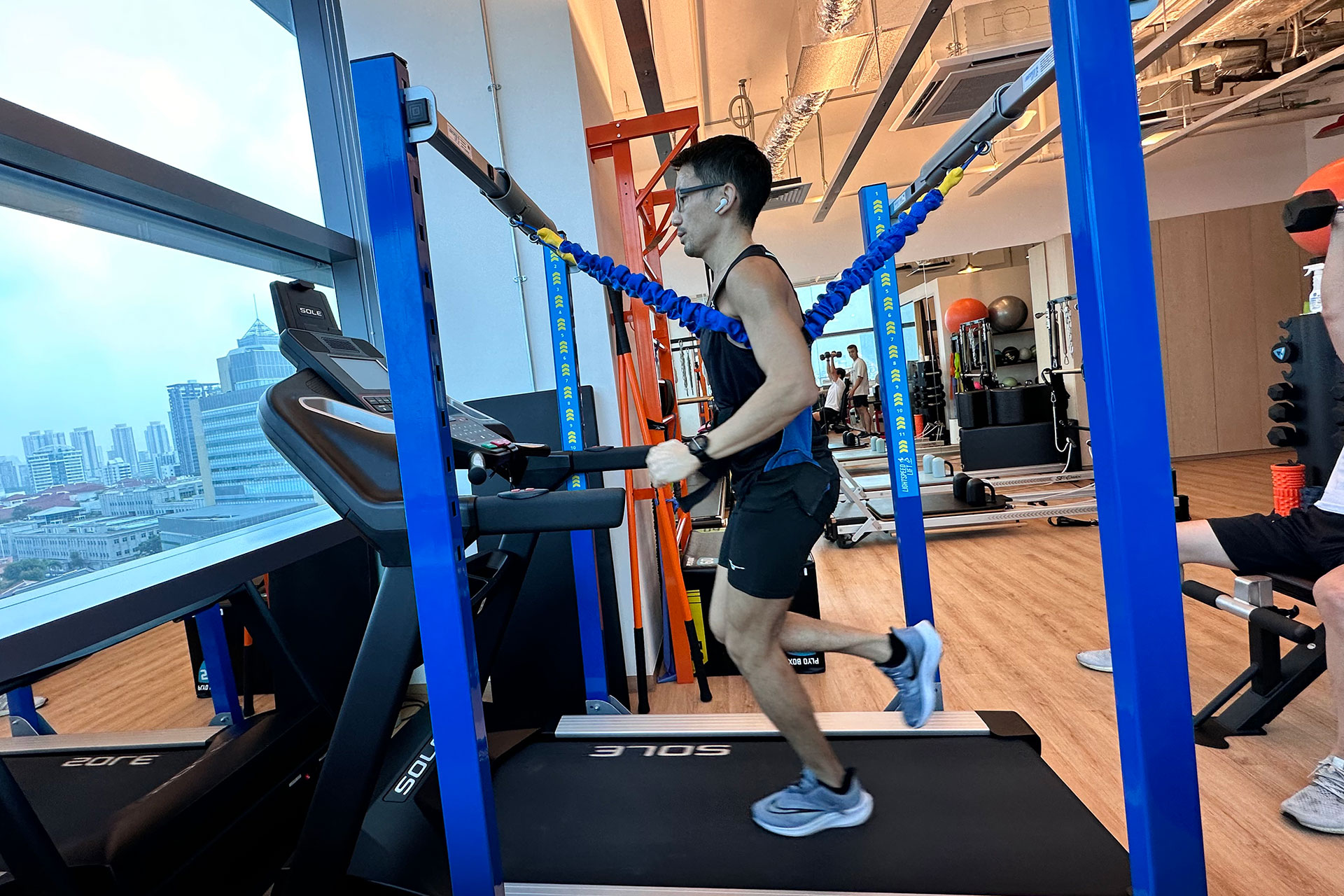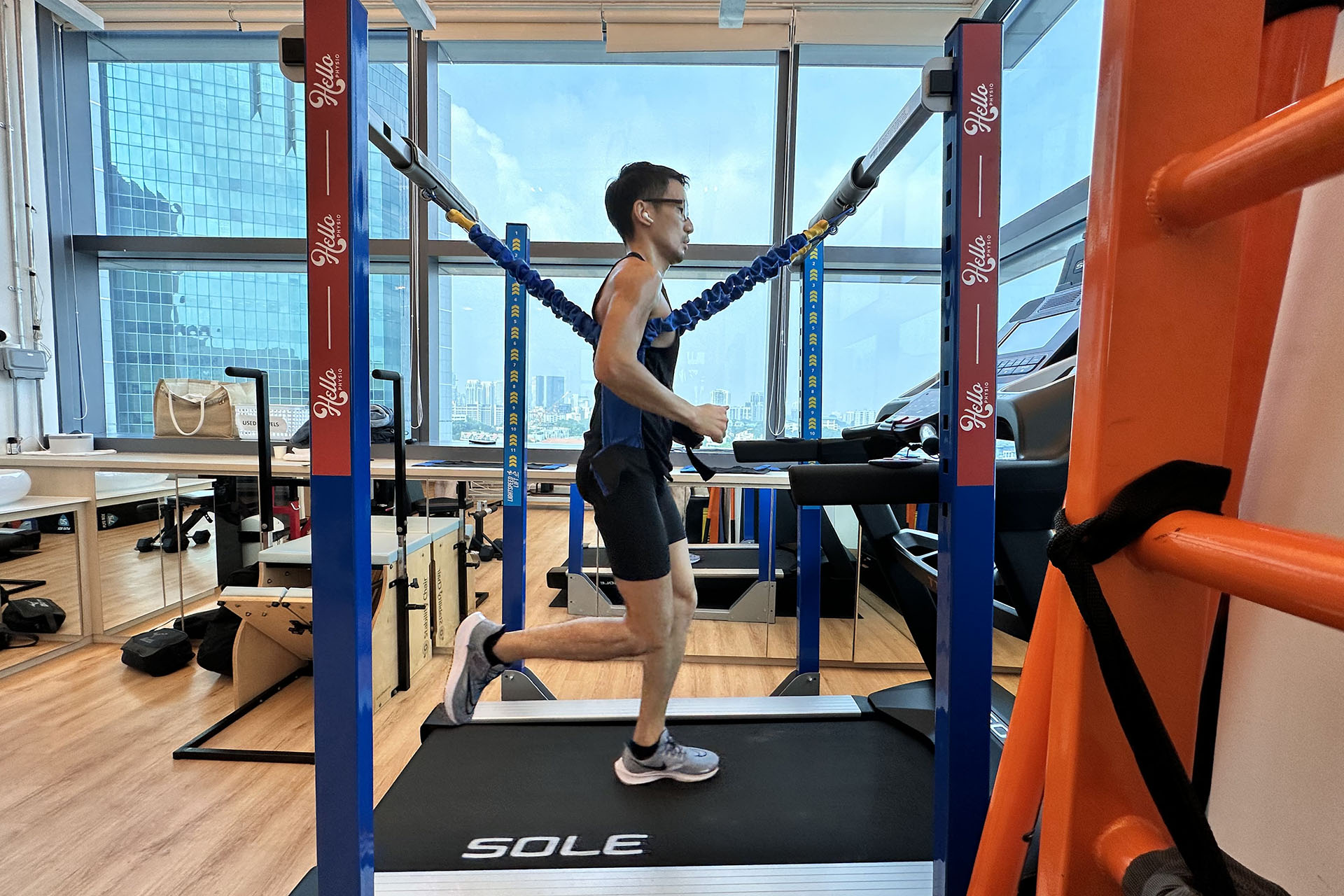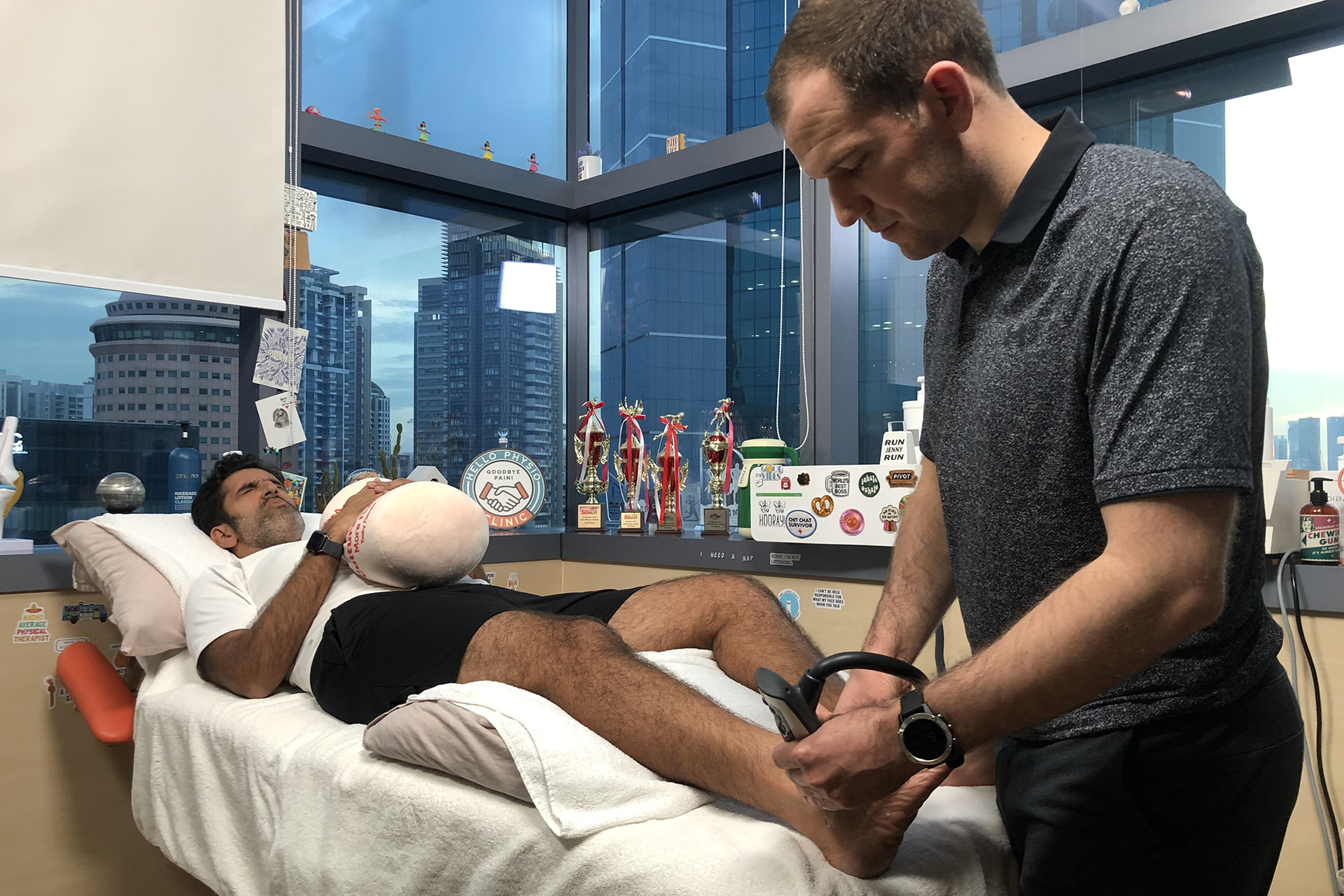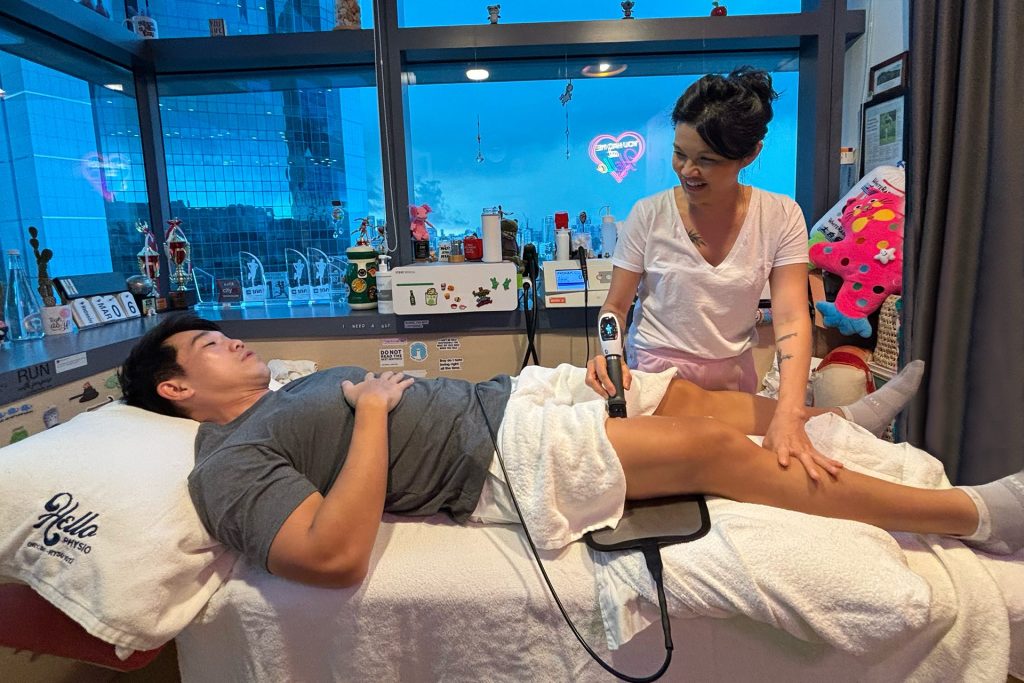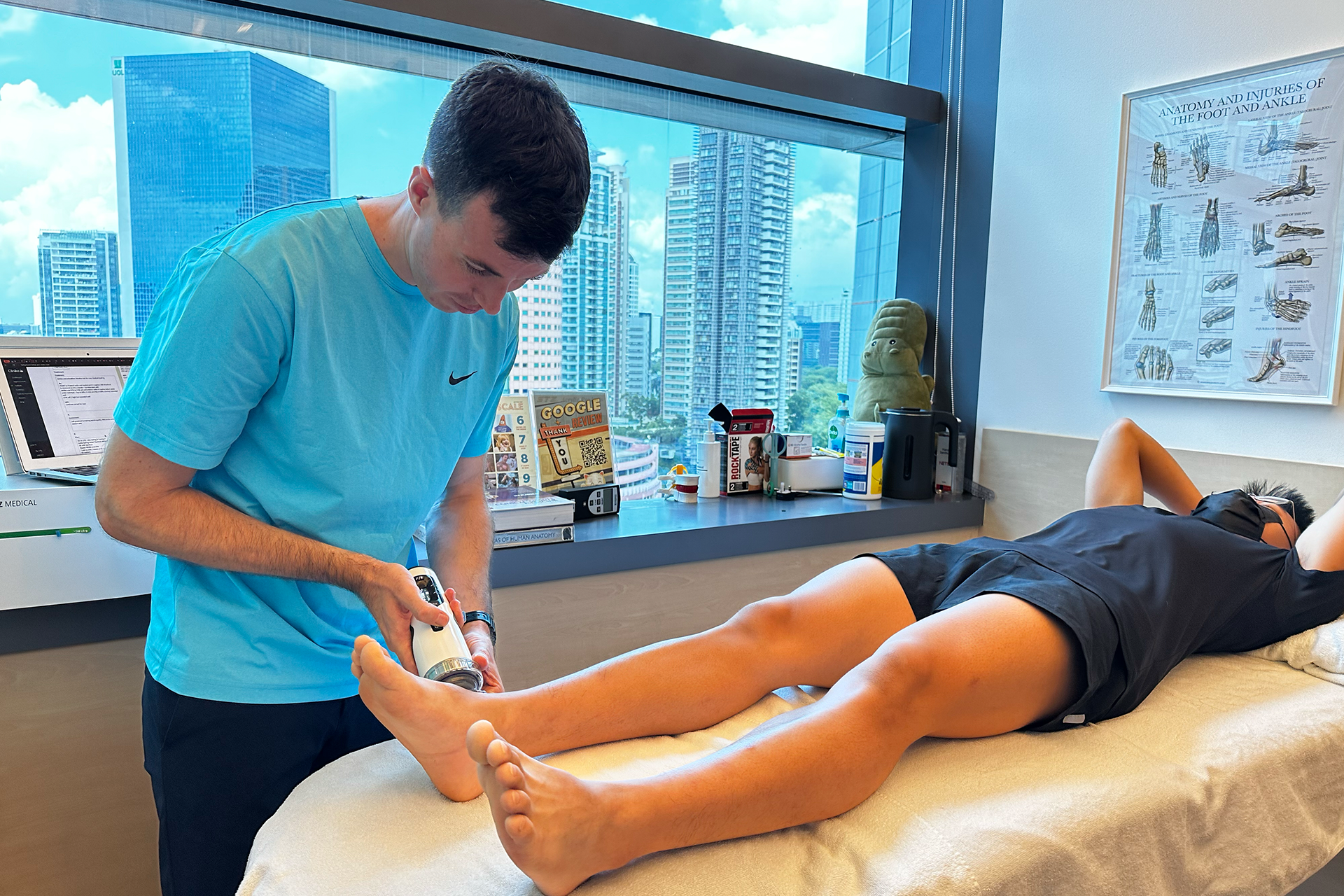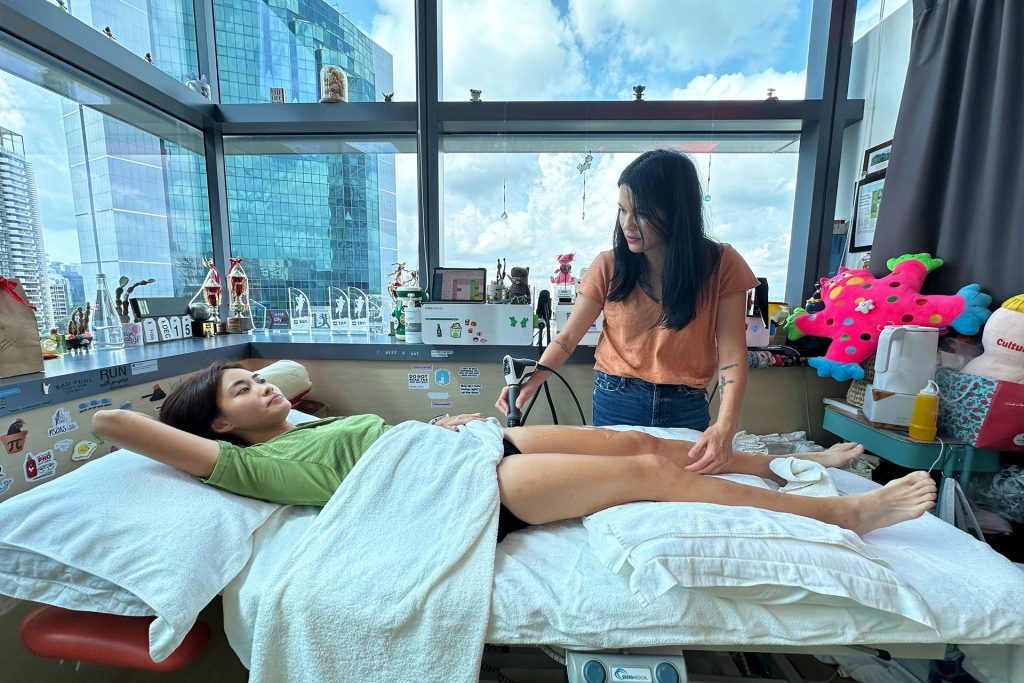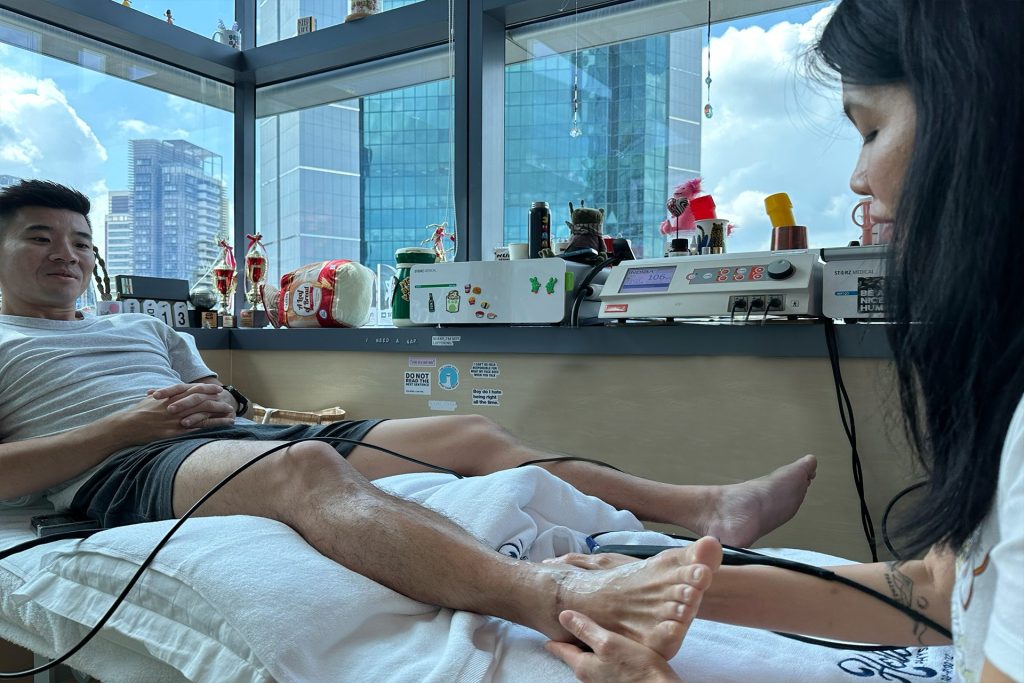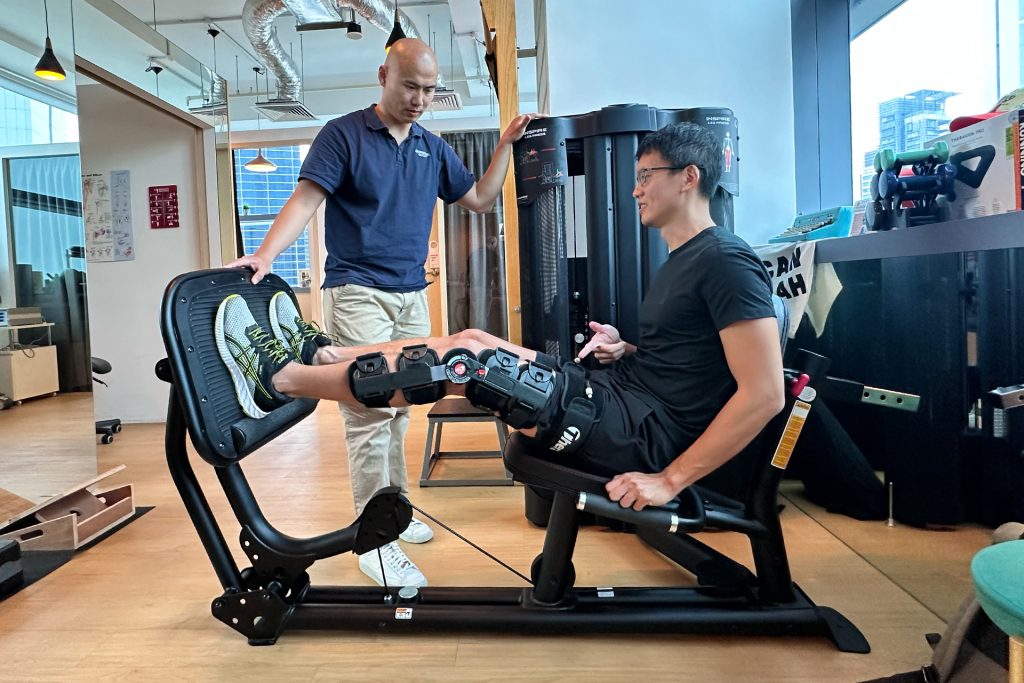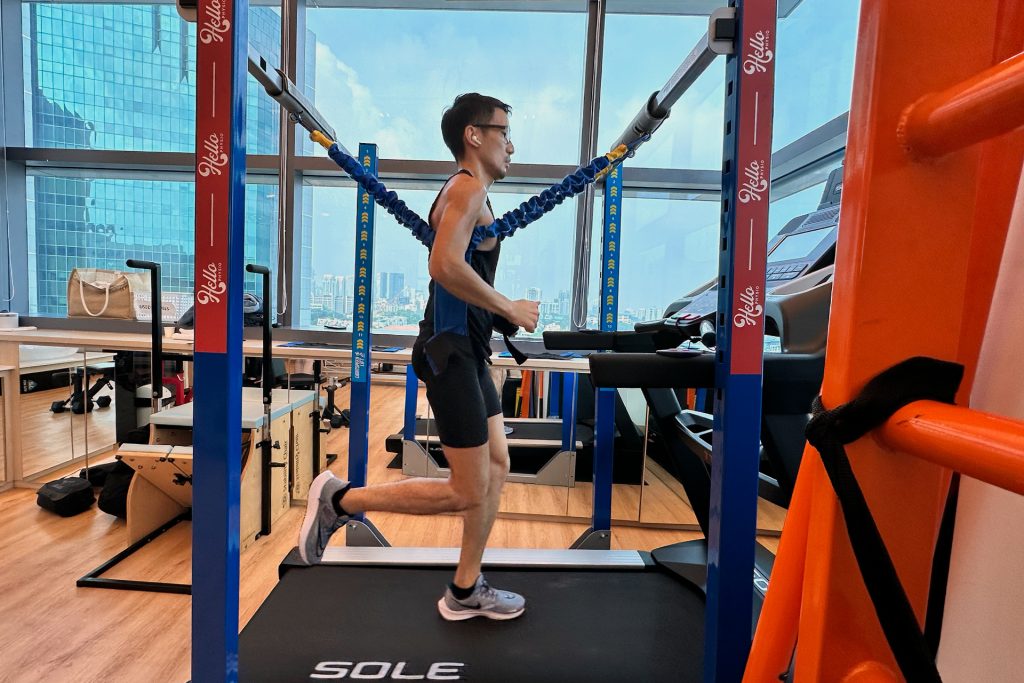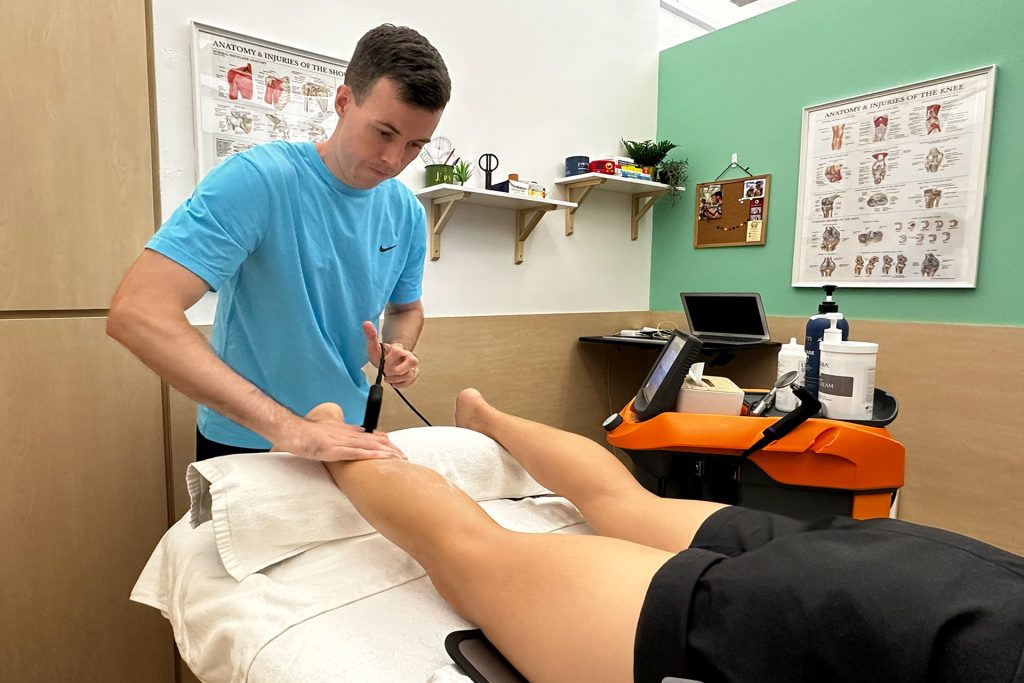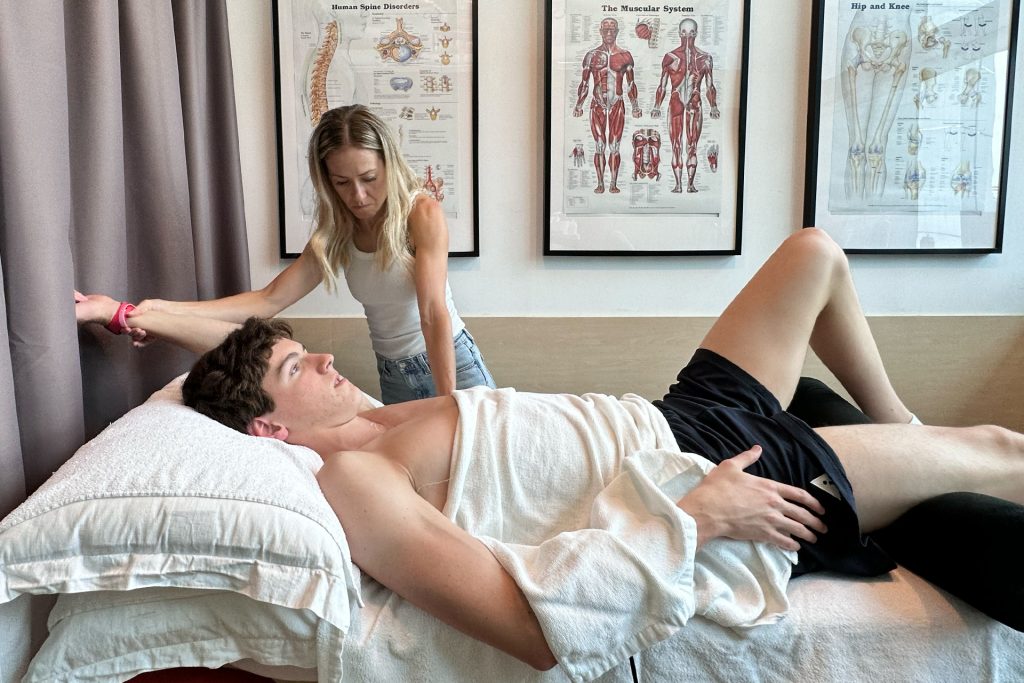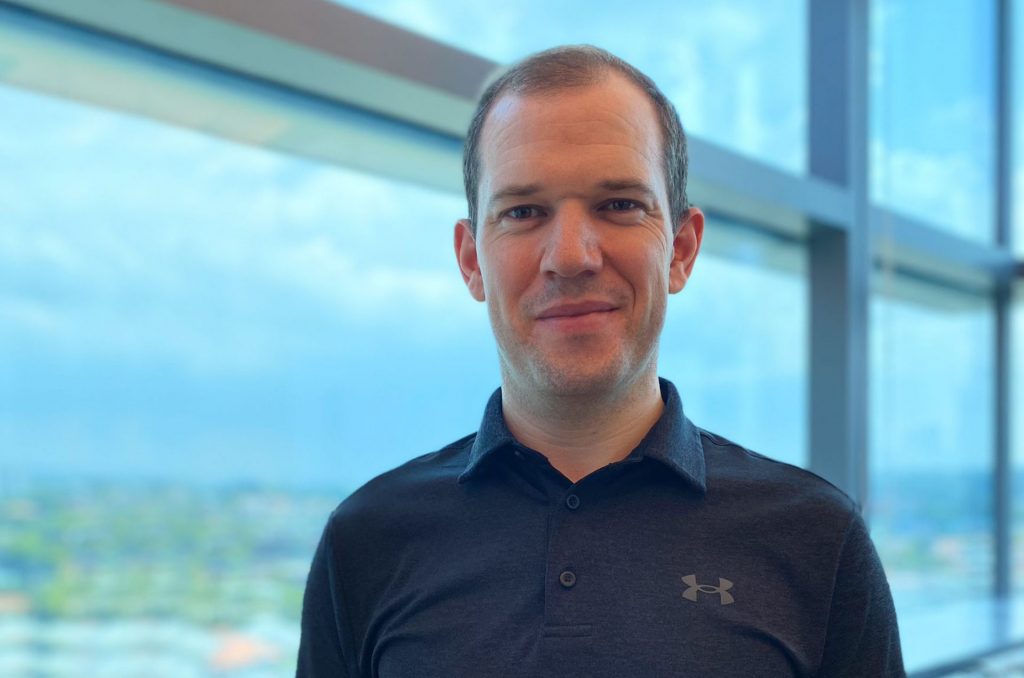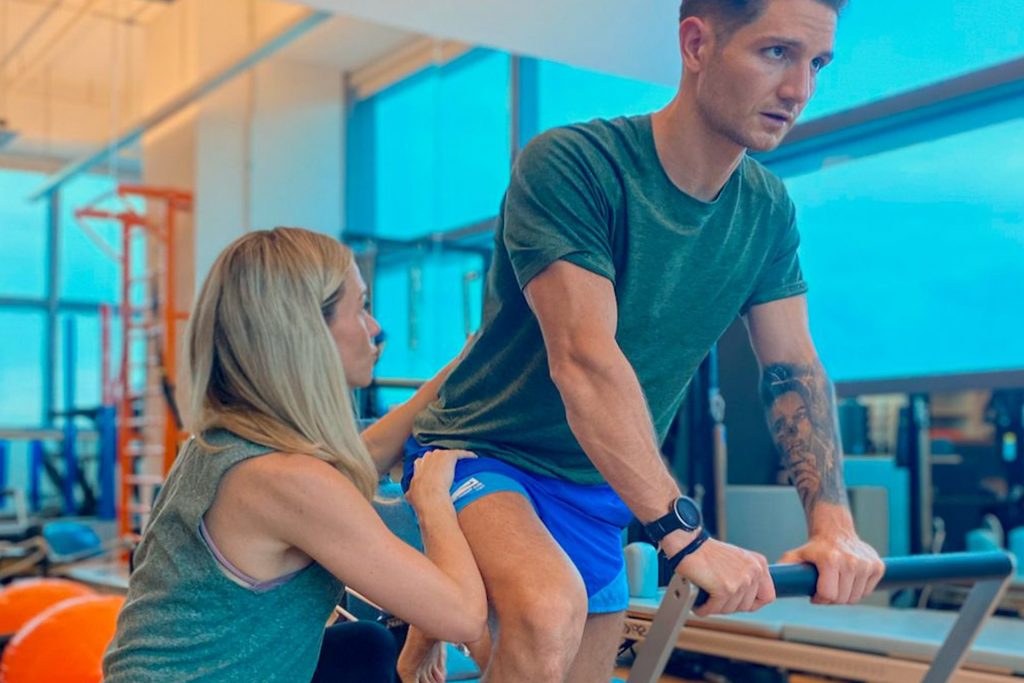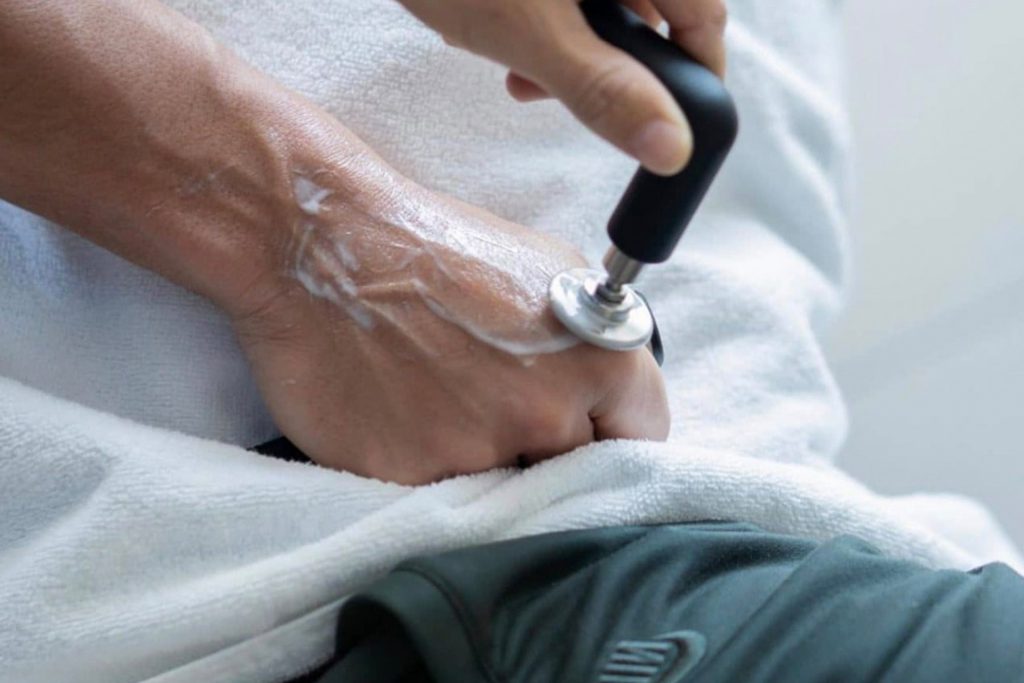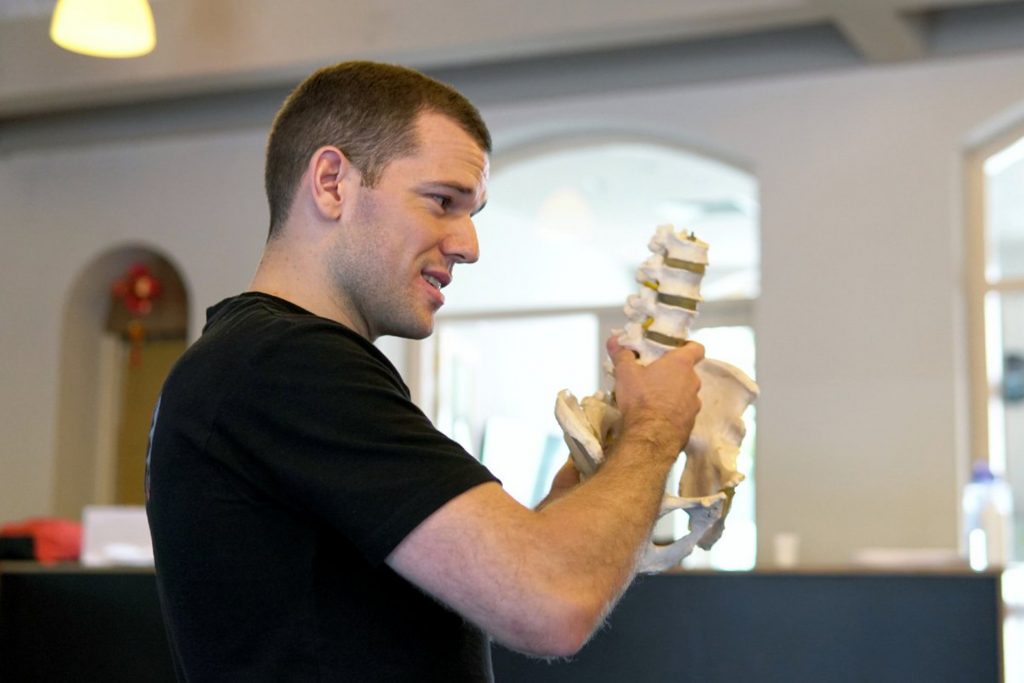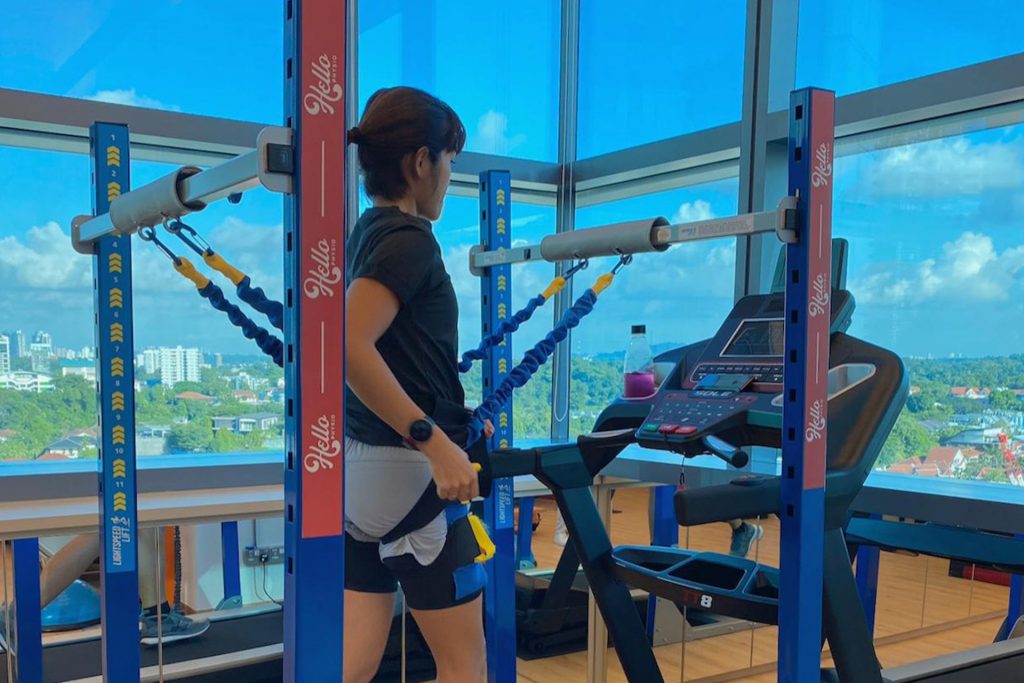|
Getting your Trinity Audio player ready...
|
Shoulder pain is a common condition affecting daily activities, from simple movements like lifting objects to more complex tasks like sports and exercise. Whether caused by injury, overuse or an underlying condition, effective shoulder pain treatment diagnoses the cause, restores mobility and prevents long-term complications.
Physiotherapy has evidence-based solutions for shoulder pain management, functional improvement and healing. HelloPhysio offers advanced shoulder pain treatment, combining manual therapy and dry needling with the latest technologies like INDIBA® Activ and Shockwave Therapy.
What Causes Shoulder Pain?
Shoulder pain can range from a mild ache to severe pain, felt in or around the shoulder joint that hinders daily activities. Diverse conditions like rotator cuff injuries, arthritis and bursitis can cause discomfort. Shoulder pain can be sharp and sudden or gradual and aching. Whatever the nature of the pain, shoulder pain can affect your ability to do daily tasks and enjoy an active lifestyle.

Anatomy of the Shoulder Joint
The shoulder joint is a ball-and-socket joint comprising the humerus (upper arm bone), scapula (shoulder blade) and clavicle (collarbone). The rotator cuff, a group of four muscles and tendons, surrounds the humerus, stabilizing the shoulder and allowing arm movement. Unfortunately, this complex structure allows mobility and makes the shoulder joint prone to dislocations and injuries from repeated stress, like rotator cuff tears. Any mishap across this complex joint could lead to lasting shoulder pain.
Shoulder pain can manifest differently in different people, depending on the cause. It can look or feel like any of the following:
- Pain or tenderness in the shoulder or upper arm
- Limited mobility or stiffness in the shoulder
- Weakness or numbness in the arm or hand
- Swelling or bruising around the shoulder
- Redness or warmth around the shoulder
- Clicking or snapping sounds when moving the shoulder
These can range from mild to severe and affect your daily activities and quality of life.
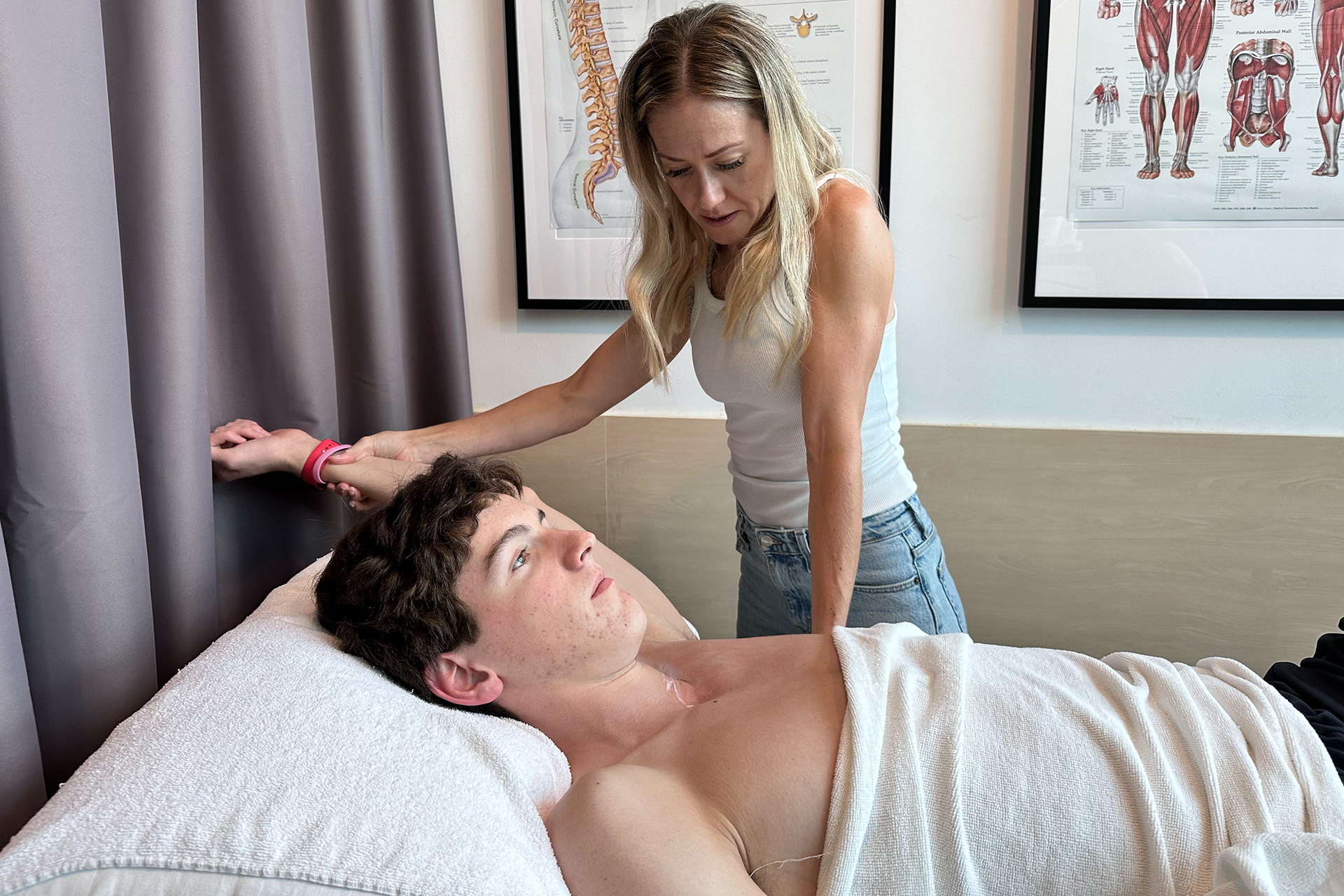
Diagnosing Shoulder Pain
Diagnosing shoulder pain starts with a thorough physical examination and a look into your medical history. A physiotherapist will assess your shoulder’s range of motion, strength and areas of tenderness. Imaging tests like X-rays or MRI scans are often ordered to get a clearer view of the shoulder’s internal structures and confirm the diagnosis. Sometimes, blood tests may be conducted to rule out other conditions causing the pain.
If you experience sudden or severe shoulder pain, difficulty moving the arm or shoulder, weakness or numbness in the arm or hand, fever, redness and swelling around the shoulder, a recent injury, or trauma to the shoulder, seek medical attention immediately. These symptoms could indicate a serious shoulder injury or other medical conditions that need prompt treatment.
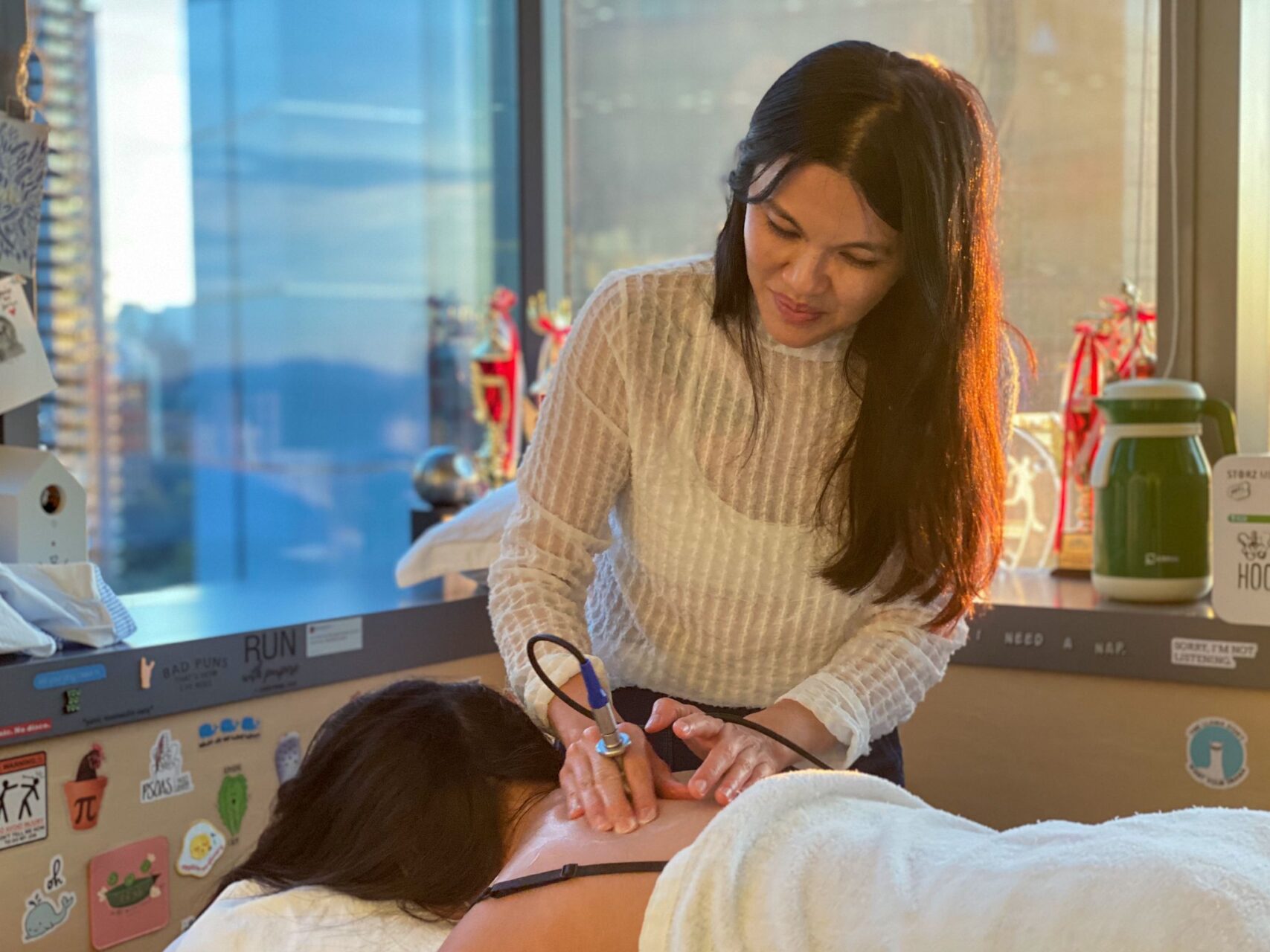
Common Causes of Shoulder Pain
Shoulder pain can come from musculoskeletal injuries, joint conditions and nerve-related issues. Common shoulder pain causes and treatment approaches vary depending on the severity and the underlying condition. The most common causes are:
- Rotator Cuff Injuries: Strains, tears, or inflammation of the rotator cuff muscles can cause weakness and reduced mobility
- Frozen Shoulder (Adhesive Capsulitis): This condition causes stiffness and pain due to inflammation and thickening of the shoulder capsule
- Shoulder Impingement Syndrome: When the tendons in the shoulder become compressed, causing pain with overhead movements
- Osteoarthritis: Wear and tear of the shoulder joint leads to pain, stiffness and reduced range of motion
- Tendinitis and Bursitis: Tendinitis, also called rotator cuff tendinitis, and bursitis can both cause shoulder pain, as inflammation of the shoulder tendons or bursae can lead to discomfort, especially with repetitive movements
Each condition requires an individualized approach to treatment, combining physiotherapy techniques to reduce pain and restore shoulder function.
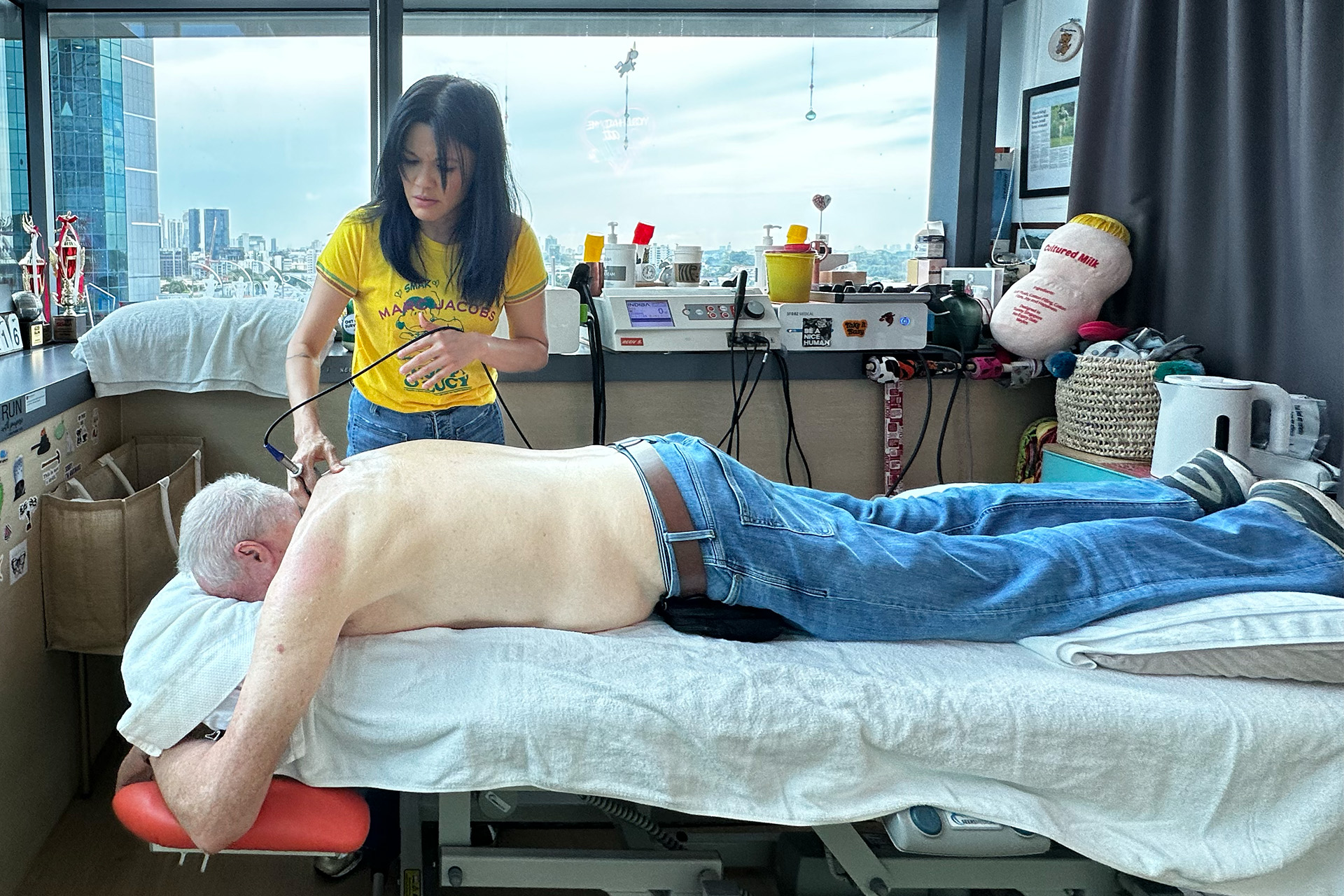
Rotator Cuff Tears and Shoulder Pain Treatment
Rotator cuff injuries often come from repetitive strain, poor biomechanics, or acute trauma. Symptoms include pain with movement, weakness and limited shoulder mobility.
Manual therapy is important in addressing rotator cuff injuries by using joint mobilization and soft tissue release techniques. These methods help improve circulation, reduce stiffness and increase range of motion. INDIBA therapy amplifies these effects by using radiofrequency energy to accelerate tissue repair, reduce inflammation, and improve blood flow at a cellular level for faster recovery. Shockwave Therapy complements these treatments by delivering high-energy acoustic waves to the affected shoulder tendons, stimulating tissue regeneration, breaking down adhesions, and increasing local circulation to aid healing.
Additionally, your physiotherapist will provide you with targeted strengthening exercises focused on rebuilding shoulder stability and muscular strength to prevent future injuries and restore optimal function.

Frozen Shoulder Pain and Mobility Management
Frozen shoulder is a painful and restrictive condition caused by inflammation and thickening of the shoulder capsule. Patients experience progressive stiffness, making even simple movements difficult.
Joint mobilization is essential to restore movement and gradually increase shoulder flexibility. INDIBA therapy reduces deep tissue inflammation and improves blood flow, which helps relieve pain and stiffness. Dry needling is often used to release muscle tension and improve neuromuscular function, reducing the discomfort associated with frozen shoulders.
Furthermore, a structured stretching and strengthening program ensures patients gradually regain mobility while preventing further stiffness.
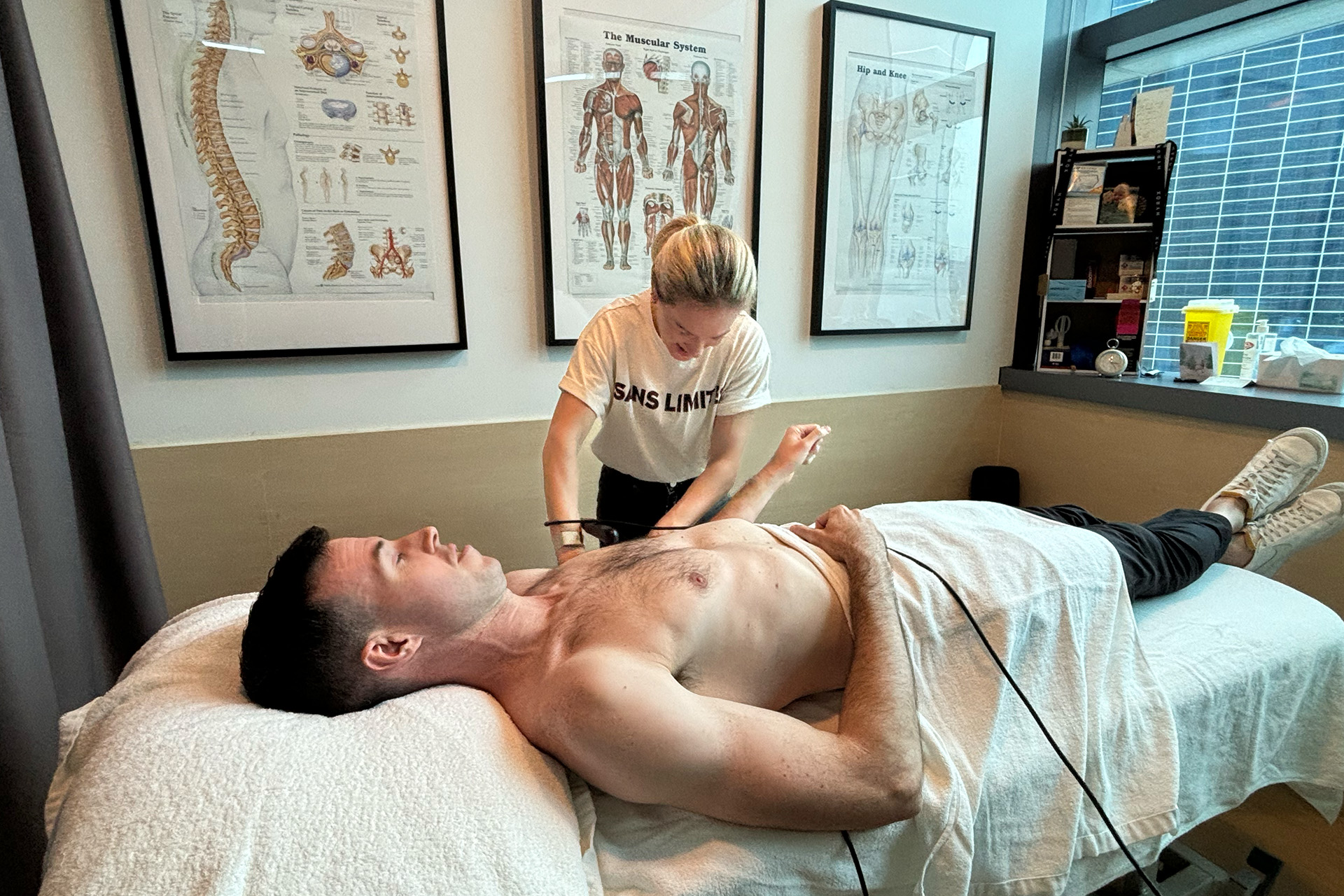
Shoulder Impingement Syndrome Pain Management and Function Improvement
Shoulder impingement occurs when the rotator cuff tendons compress, causing pain with overhead arm movements. This condition, sometimes misdiagnosed as a rotator cuff tear, is common in athletes and individuals who perform repetitive lifting movements.
Postural correction and movement pattern retraining are key in reducing strain on the shoulder and preventing recurrent impingement. Shockwave Therapy is very effective in this condition as it helps break down adhesions, promote collagen remodelling, improve circulation, reduce inflammation, and enhance tissue repair. Manual therapy techniques such as myofascial release and joint mobilization relieve muscle tension and strengthen shoulder joint alignment, restoring pain-free movement.
Strengthening is integral to a comprehensive treatment plan to stabilize the scapula and rotator cuff muscles for long-term shoulder health and function.
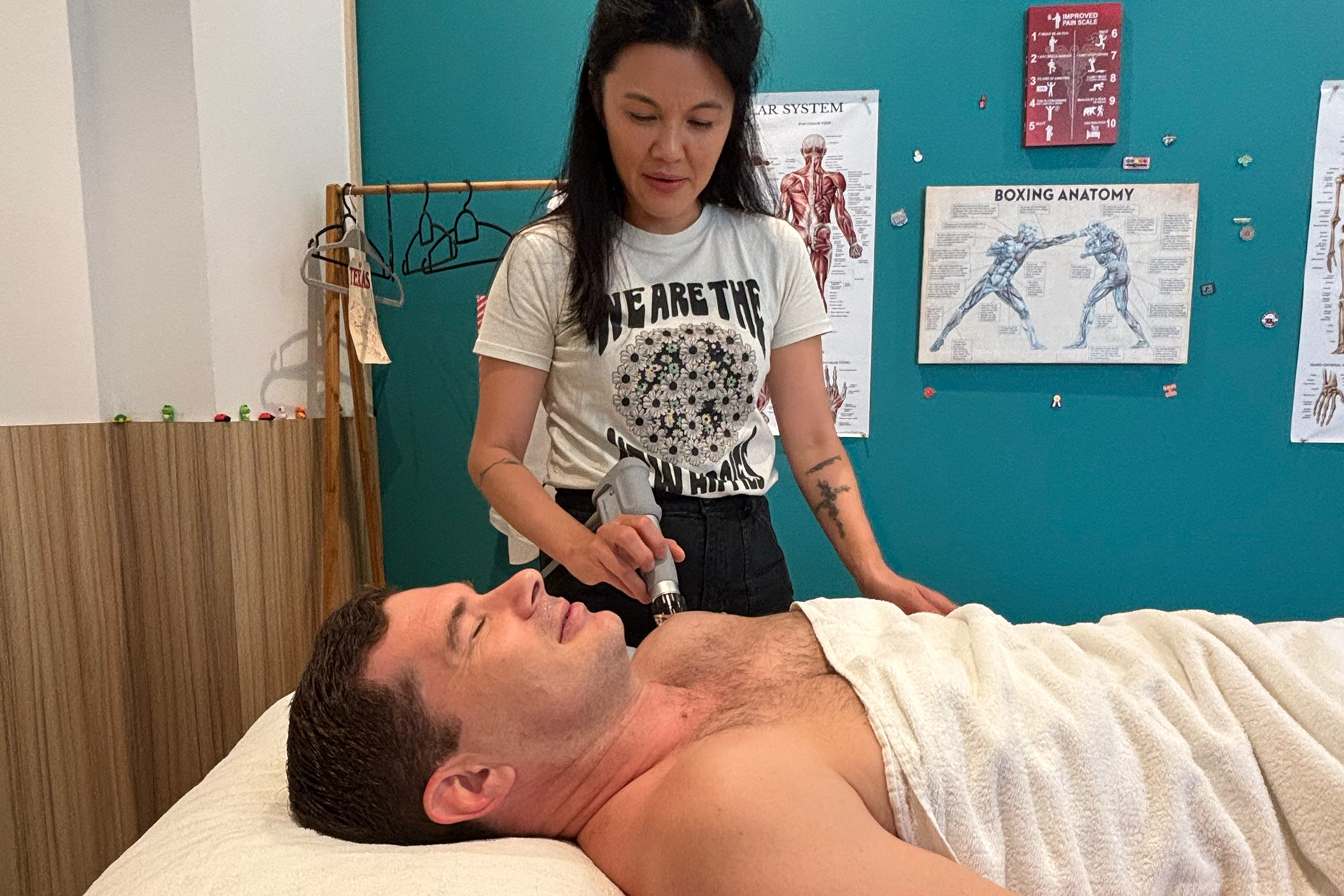
Chronic Osteoarthritic Shoulder Pain Management
The cartilage breakdown from shoulder osteoarthritis causes joint stiffness and pain. While no cure exists, physiotherapy can significantly reduce discomfort and improve joint function.INDIBA® Activ Therapy reduces inflammation and stimulates cellular regeneration to slow osteoarthritis progression. Shockwave Therapy helps to improve tissue resilience and stimulate collagen production, which can help maintain joint function.
Strength and mobility exercises are important to preserve flexibility and reduce pain, while pain management strategies focus on modifying daily activities to reduce joint strain and improve overall function.
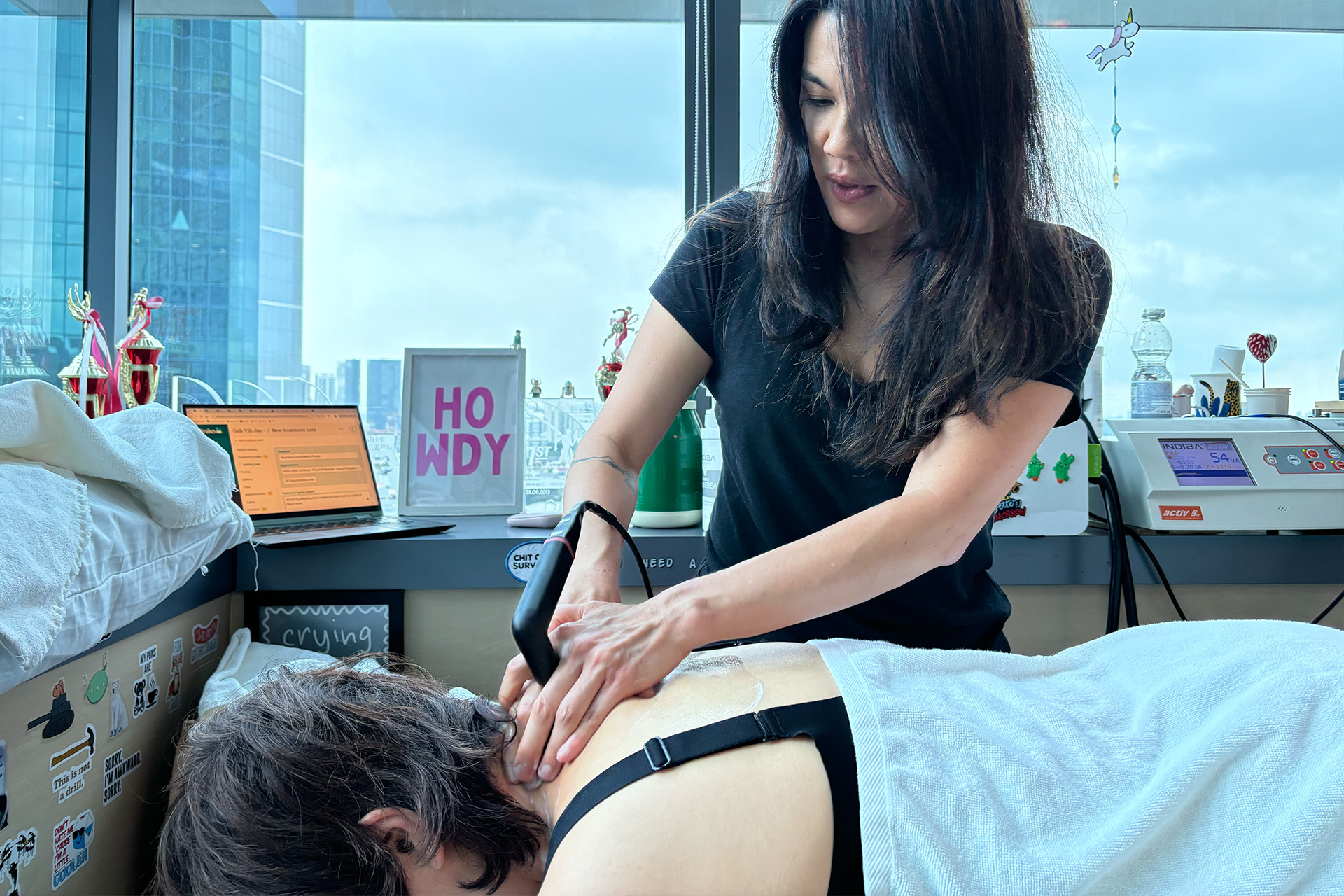
Tendinitis and Bursitis Inflammation Management
Tendinitis and bursitis are caused by repetitive strain, resulting in localized pain and swelling in the shoulder. Sudden shoulder pain is a sign of tendinitis or bursitis and needs to be addressed promptly to prevent further complications. These conditions usually respond well to conservative management.
Manual therapy improves circulation and reduces inflammation in the affected area, allowing for natural healing. Dry needling is particularly effective in releasing muscle knots and relieving excess muscle tension that may exacerbate the condition. INDIBA® Activ Therapy supports the healing process by reducing swelling and promoting cellular repair.
Finally, a rehabilitation program with strengthening and mobility exercises helps restore function and prevent recurrence for long-term shoulder health.
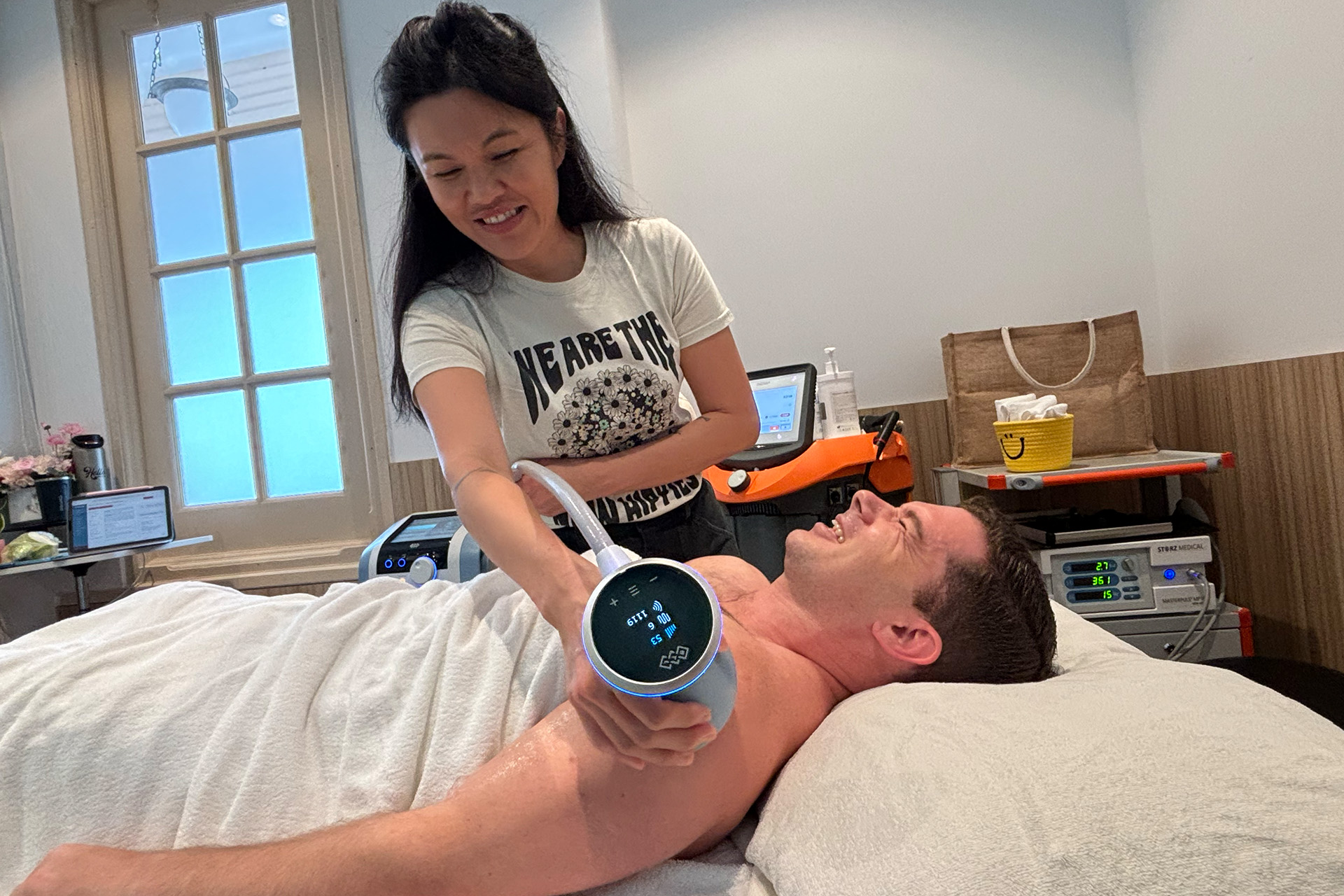
Why HelloPhysio for Shoulder Pain Treatment in Singapore?
HelloPhysio offers a holistic and evidence-based approach to shoulder pain treatment. Our experienced physiotherapists combine advanced technology with manual therapy for effective relief and long-term recovery. Whether you need chronic shoulder pain treatment, rehabilitation from an injury, or management of a degenerative condition, HelloPhysio will tailor the treatment to your needs. Contact us now to book an appointment.

